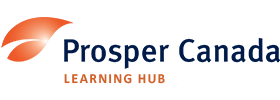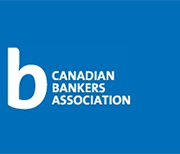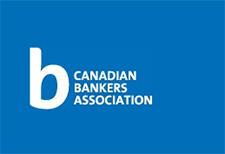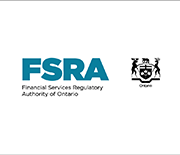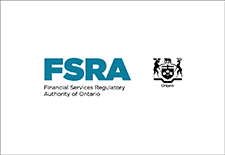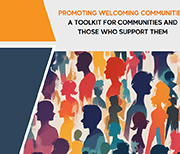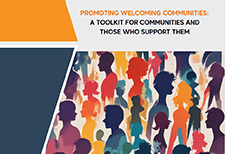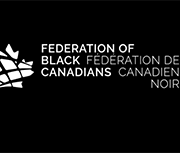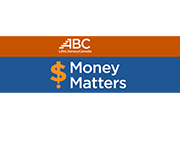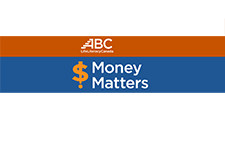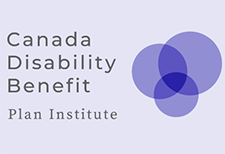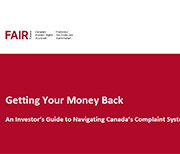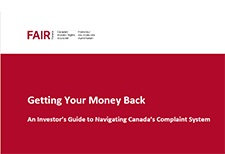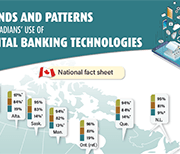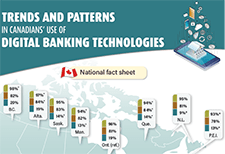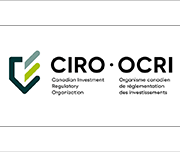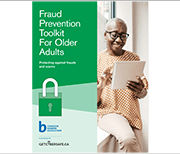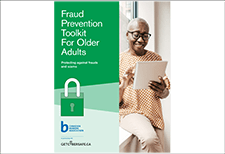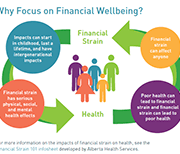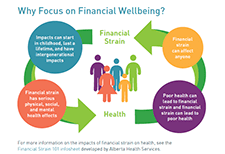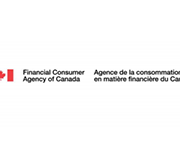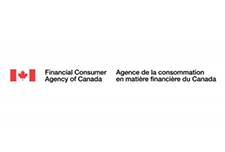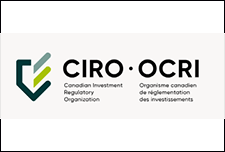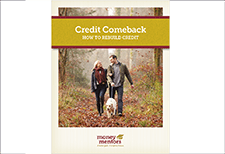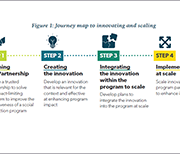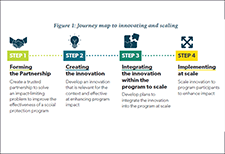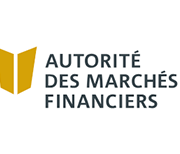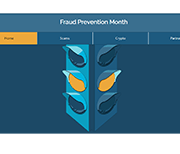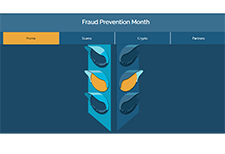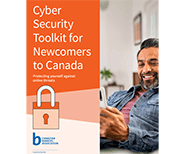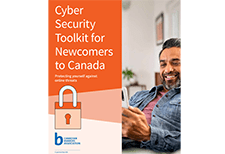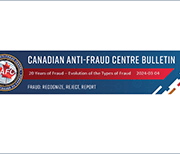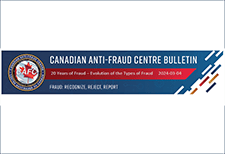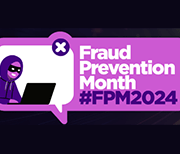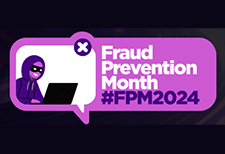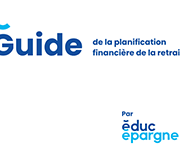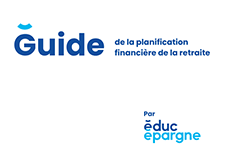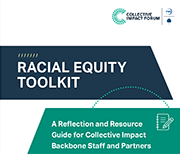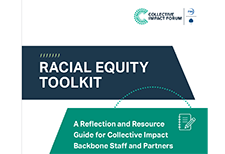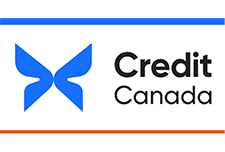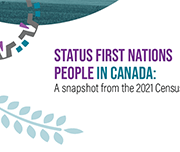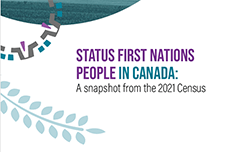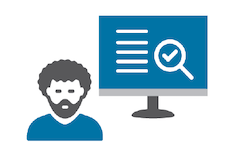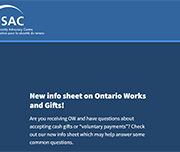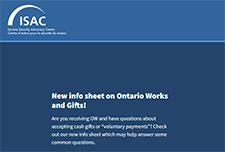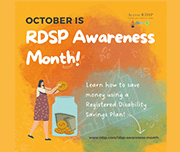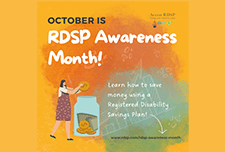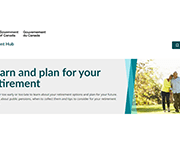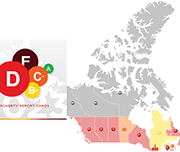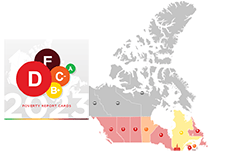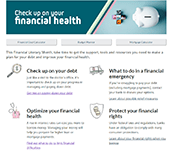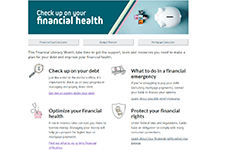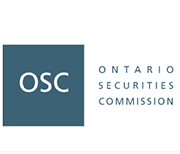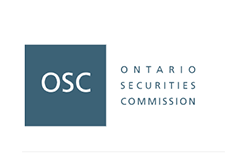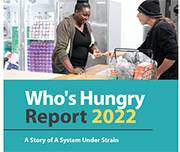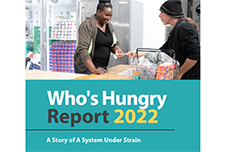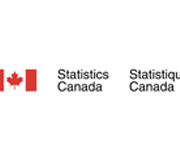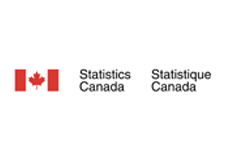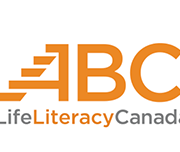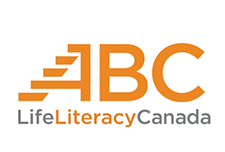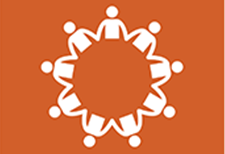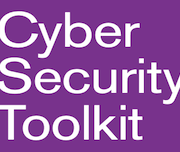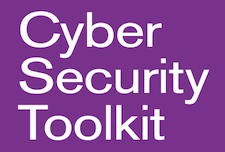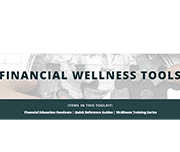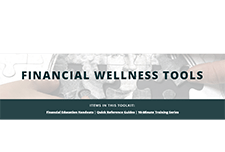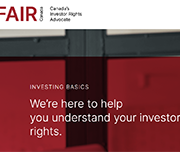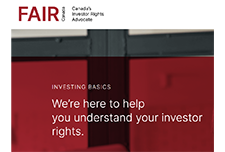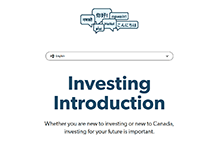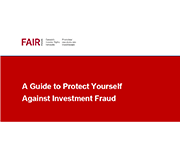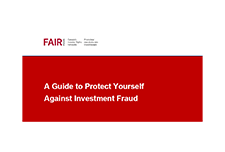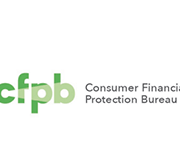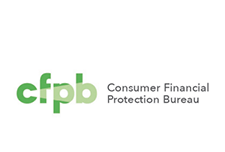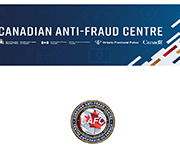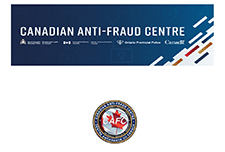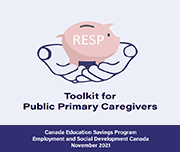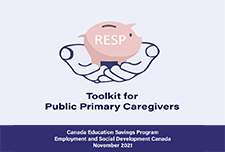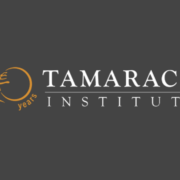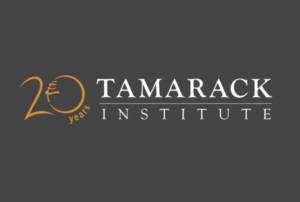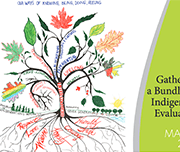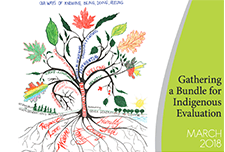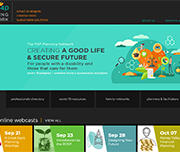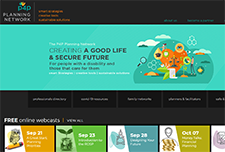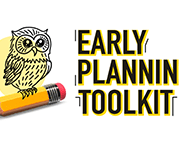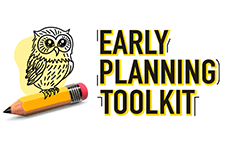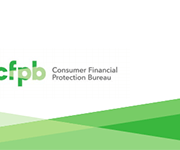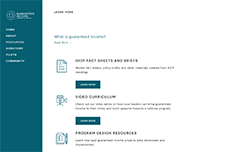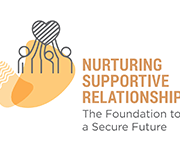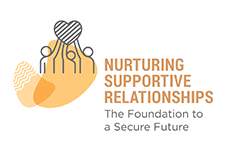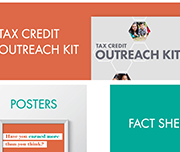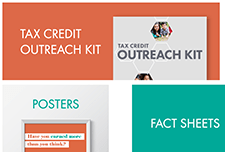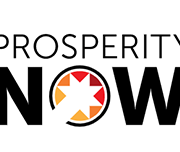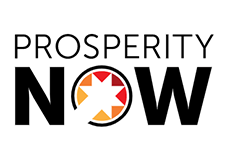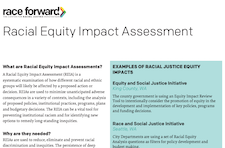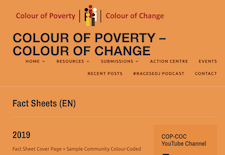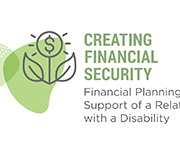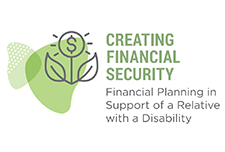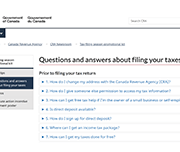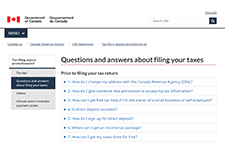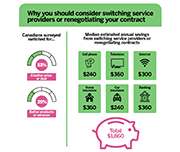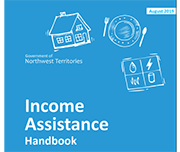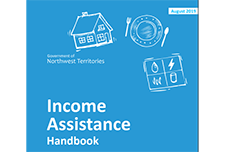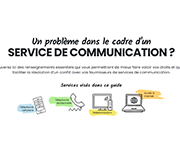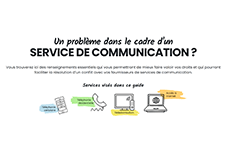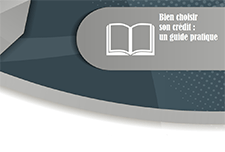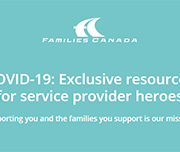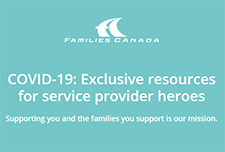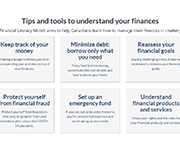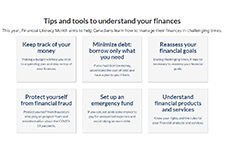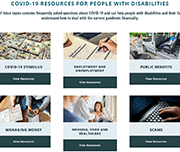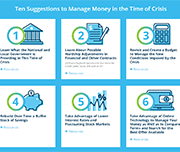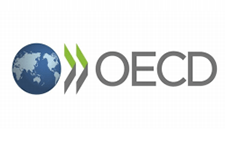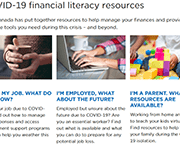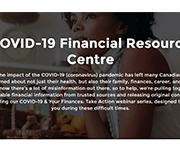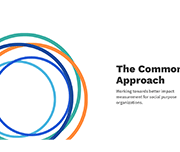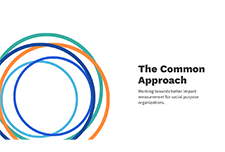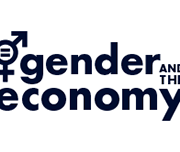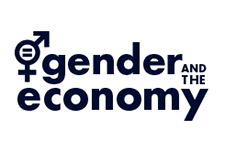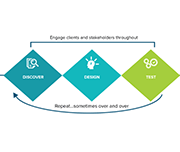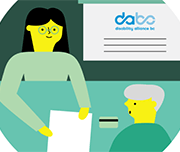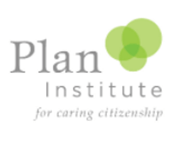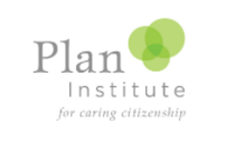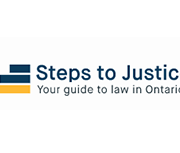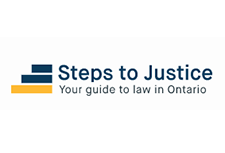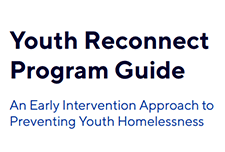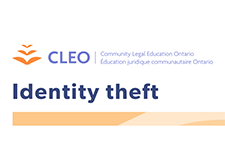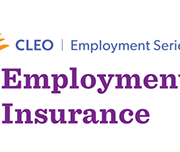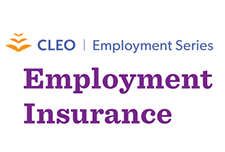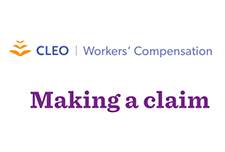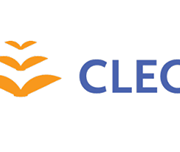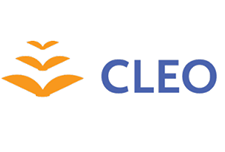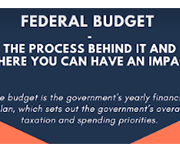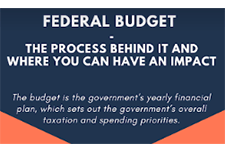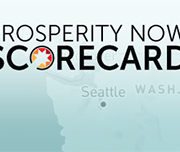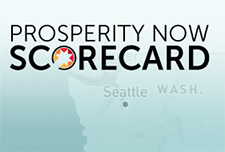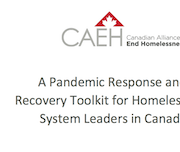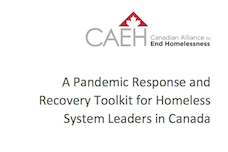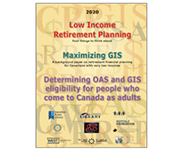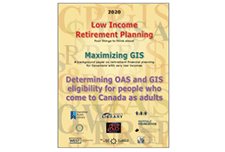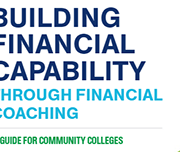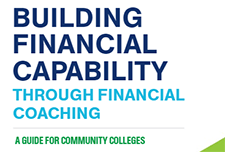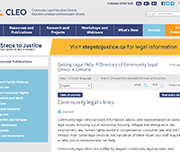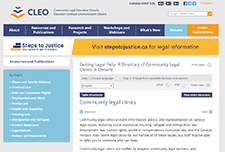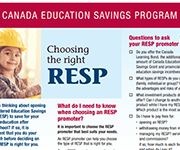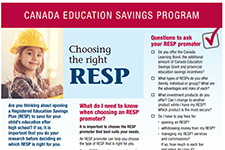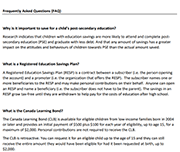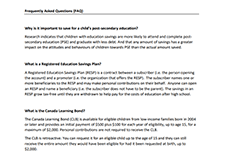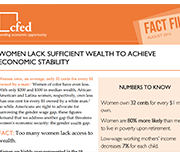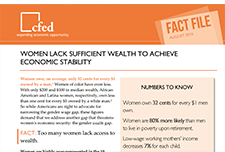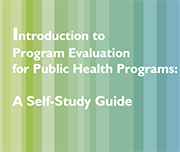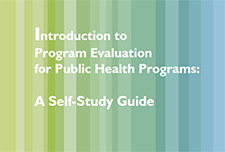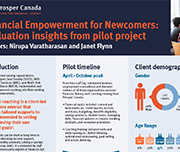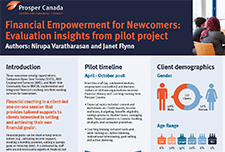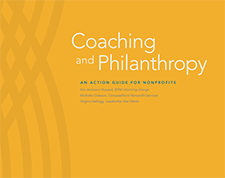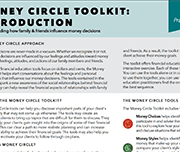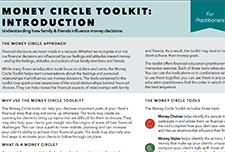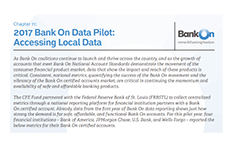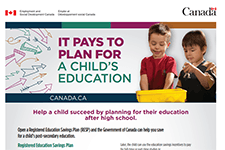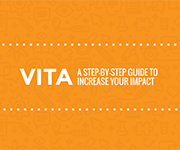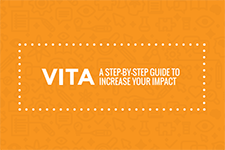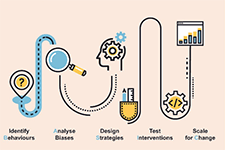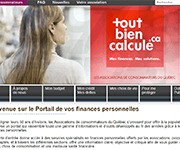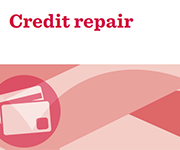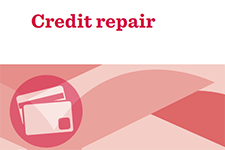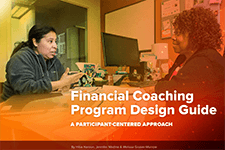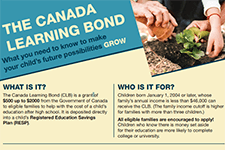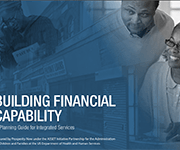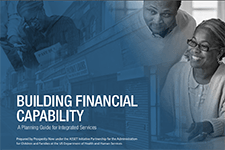English
The Embedded Financial Coaching Pilot
The resources below introduce the Embedded Financial Coaching model in the context of workforce programs. They are designed to generate the interest of financial empowerment service providers and workforce programs about the promising possibilities of this model. Future phases of the toolkit will assist with initial planning and implementation stages for embedding FE into workforce programs.
- The Embedded Financial Coaching Primer gives a quick overview of the “what” and “why” of embedding financial empowerment into workforce programs
- The Integrating Financial Coaching into Employment Services Landscape Scan summarizes the literature and promising practices from the USA.
- The Literature review summarizes the promising practices to improve participant retention for multi session interventions that lead to deeper financial wellbeing outcomes (for detailed summaries refer to additional resources section).
Learn more about embedding financial empowerment
Canadian Publications
Prosperity Gateways: Cities for financial empowerment – Building the case outlines evidence for embedding FE.
US Publications
The US Department of Health and Human Services through its Office of Planning. Research and Evaluation supported MEF Associates and the Urban Institute to conduct a large-scale research project of the over 15 years of integrating financial capability and workforce programming. As part of this research project two research reports are highly relevant for attempts to replicate integrated service delivery in the Canadian context. The first report is a literature synthesis on Integrating Financial Capability into Employment Services. The second report is a summary of the approaches, motivations and types of services and participant perspectives on integrated services Understanding Financial Capability Interventions within Employment-Related Contexts for Adults with Low Incomes.
The Local Initiatives Support Corporation runs over 100 Financial Opportunity Centres across the USA. These FOCs deliver integrated financial empowerment and employment programs. A 2016 study evaluated the impacts of integrated service delivery… more recently LISC developed an Implementation Academy.
In 2015 The Administration for Children and Families, a division of the US Department of Health and Human Services, in collaboration with the Prosperity Now developed Building Financial Capability: A Planning Guide for Integrated Services. This resource is technical guide for community-based organizations that serve low- and moderate-income individuals.
Additional resources: Literature summaries
Citi Financial Capability Demonstration Project
Matched Savings Account Program Study
Financial Coaching Impact Evaluation
Pathfinders Re-Entry Mentoring Program
CFPB Financial Coaching Strategy
GreenPath Virtual Financial Coaching Pilot
Understanding Family Engagement in Home Visiting: Literature Synthesis
Study on Efficacy of Health Coaching and an Electronic Health Management Program
French
Financier intégré dans le contexte des programmes pour la main-d’œuvre
Les ressources ci-dessous présentent le modèle d’accompagnement financier intégré dans le contexte des programmes pour la main-d’œuvre. Elles ont été créées dans le cadre du projet pilote d’accompagnement financier intégré et sont destinées à susciter l’intérêt des fournisseurs de services d’autonomisation financière et des programmes d’emploi quant aux possibilités prometteuses du modèle. Les prochaines étapes de la trousse à outils contribueront à la planification initiale et aux étapes de mise en œuvre de l’intégration de l’éducation financière dans les programmes de formation de la main-d’œuvre.
- Le guide d’introduction à l’accompagnement financier intégré donne un aperçu du « quoi » et du « pourquoi » de l’intégration de l’autonomisation financière dans les programmes destinés à la main-d’œuvre.
- L’analyse documentaire sur l’intégration de l’accompagnement financier dans les programmes destinés à la main-d’œuvre présente une synthèse de la littérature et des pratiques prometteuses des États-Unis, ainsi que des connaissances acquises par les partenaires du projet d’accompagnement financier intégré.
- La revue de la littérature résume les pratiques prometteuses pour améliorer la rétention des participants dans le cadre d’interventions en plusieurs séances qui mènent à des résultats plus profonds en matière de bien-être financier.
En savoir plus sur l’intégration de l’autonomisation financière
Publications canadiennes
Sur la voie de la prospérité : les villes pour l’autonomisation financière (en anglais seulement)— Le dossier présente des données relatives à l’intégration de l’éducation financière.
Publications américaines
Le ministère de la Santé et des Services sociaux des États-Unis, par l’intermédiaire de son bureau de la planification, de la recherche et de l’évaluation a soutenu le cabinet MEF Associates et l’Urban Institute pour mener un projet de recherche de grande envergure (en anglais seulement) portant sur l’intégration des programmes de capacité financière et de main-d’œuvre sur une période de plus de 15 ans. Dans le cadre de ce projet de recherche, deux rapports de recherche sont très pertinents pour les tentatives de reproduction de la prestation de services intégrés dans le contexte canadien. Le premier rapport est une synthèse de la littérature sur l’intégration de la capacité financière dans les services d’emploi (en anglais seulement). Le deuxième rapport est un résumé des approches, des motivations et des types de services, ainsi que des points de vue des participants sur les services intégrés : Comprendre les interventions en matière de capacité financière dans les contextes liés à l’emploi pour les adultes ayant de faibles revenus (en anglais seulement).
La Local Initiatives Support Corporation (LISC) gère plus de 120 centres de ressources financières (Financial Opportunity CenterMD — FOC) à travers les États-Unis. Ces centres FOC proposent des programmes intégrés d’autonomisation financière et d’emploi depuis 2005. Une étude de 2016 a évalué les impacts de la prestation de services intégrés… La LISC a mis en œuvre un centre de ressources en ligne (en anglais seulement) pour les praticiens, qui comprend des ressources sur la prestation de services, l’accompagnement financier, leur système de gestion des clients Salesforce, ainsi que sur les opérations et l’administration. Récemment, la LISC a publié un résumé des résultats (en anglais seulement) à propos d’une académie de mise en œuvre visant à former les organismes de main-d’œuvre sur la façon d’intégrer l’accompagnement financier individuel dans leur modèle de prestation de services existant.
En 2015, l’Administration for Children and Families, une division du ministère de la Santé et des Services sociaux des États-Unis, en collaboration avec Prosperity Now, a élaboré le Guide de planification pour les services intégrés : Renforcer la capacité financière. Cette ressource est un guide technique destiné aux organismes communautaires qui s’occupent des personnes ayant de faibles revenus ou des revenus modestes.
Ressources Additionnelles : La synthèse de la littérature
Projet de démonstration de la capacité financière de Citi
L’étude portant sur le programme de compte d’épargne jumelée
L’évaluation portant sur les répercussions de l’accompagnement financier
Programme de mentorat pour la réintégration de l’organisme Pathfinders
Projet pilote d’accompagnement financier virtuel de GreenPath
L’efficacité de l’accompagnement en matière de sante et d’un programme de gestion en cyber santé
Tools and resources
Financial Education
- Dollars and sense, AFOA Canada – A suite of financial literacy workshops for Indigenous youth
- Managing your money, Prosper Canada – A series of seven worksheets to help Indigenous individuals and families to set and work towards money goals. Available in English, French, Plains Cree and Ojibwe here: Managing your Money: Tools and tips to help you meet your goals
- Financial Literacy for Indigenous Peoples, RBC – With a focus on lump sum payments this course is intended to provide knowledge about money and banking for all Indigenous Peoples .
- Financial health & wealth, NWAC – A toolkit that includes information and worksheets on financial health topics.
- Money matters, ABC Money matters – Workbooks that are tailored for Indigenous Peoples on spending plans, banking basics, borrowing money, ways to save and smart shopping.
- Money stories, SEED – A customized money management training program for Indigenous youth.
- Financial literacy workshops for Canadians living in the North, CMHC – This workshop series will cover several areas related to purchase of a house from mortgages, to pre-approvals and home buying programs.
- Money minutes, First Nations Bank of Canada – One-minute-long recordings one a range of financial topics from budgeting to creating a rainy-day fund.
- Navigating Financial Empowerment for First Nations, First Nations Market Housing Fund – This article includes links to tools and resources to plan one’s financial journey
- Financial Capability Workbooks, NWAC
- Credit podcast, AFOA Canada – A Money Smarts podcast on how to build and keep credit in good shape
- Writing your own will: A guide for First Nations People Living on Reserve – A resource from AFOA British Columbia.
- Retirement planning, First Nations Development Institute – a tip sheet on planning for retirement for First Nations in the United States.
- Building Native Communities; Financial Skills for families, Oweesta – A financial skills curriculum that will help people make informed decisions for themselves, their family and their community.
- Financial Connect: Indigenous Workbook, Bissell Centre – a basic financial services and identification (ID) for Indigenous peoples workbook
- Retirement Planning, First Nations Development Institute – an introductory guide to retirement planning
- Building Native Communities; Financial Skills for families, Oweesta – A curriculum designed to help make informed financial decisions
- A Guide to Financial Literacy: Money and Youth , CFEE – A guide for youth, parents and teachers to learn about different aspects of financial education.
- Indigenous Business Development Toolkit, Government of Ontario – This toolkit provides business development supports, tools and information to help you start and operate a successful business.
- Back to the basics of Personal Budgeting, CandoEDO – This webinar emphasizes how developing a successful Personal Finance Plan an help self, loved one and communities reach financial capability.
- Webinar series on Financial Literacy, NADF
Tools and resources for lump sum payments
*Not Indigenous specific resource
- It’s my life – how to build your financial wellness future, AFOA Canada – Narrated PowerPoints focusing on identifying goals, developing a financial wellness plan, getting support and consumer protection
- It’s my life – am I prepared?, AFOA Canada – These workbooks help you picture your life in 2 years how would you like to spend your money.
- Sixties Scoop, It’s my life “How to build your financial wellness future!”, AFOA Canada – Understanding Sudden Wealth and planning for it.
- Receiving a large amount of money from the government, FCAC – This resource includes links to tools on money goals, budgeting, paying debt, savings goals…)*
- What to do when you get money from the government, FCAC – Options include cashing a cheque (and information around applicable fee), direct deposit and links to tools*
- Managing a financial windfall, CIRO – With a focus on consumer protection, this resource shares ways to avoid frauds and scams but also ways to identify personal financial goals*
- You’ve just received a big amount of money. Now what?, FCAC – A cheat sheet of what to consider when receiving a large amount of money.*
- How to manage Sudden Wealth in 7 steps, Smart Asset (US) – Advice and further reading on managing a large financial windfall*
- How to manage sudden wealth, Wealth Management Canada- In this article both the emotional and financial aspects of receiving a lump sum payment are discussed*
- How to deal with Sudden Wealth Syndrome and Manage Newfound Riches, Money Crashers – This article elaborates on what sudden wealth syndrome is and how to deal with it.
- Managing large amounts of sudden wealth, Investopedia (US) – Understanding the emotional toll of receiving an unexpected sum of money and how to plan for it with caution.
- Indigenous Women in Business- A best practices approach, Aboriginal Business and Community Development Centre – Best practices to assist females entrepreneurs
Tools and resources for consumer protection
*Not Indigenous specific resource
Frauds and scams:
- Protecting your money, RBC – This module from RBC’s Financial Literacy for Indigenous Peoples course covers banks and financial institutions, protecting oneself from frauds…
Elder financial abuse:
- What every older Canadian should know about financial abuse, Federal/Provincial/Territorial Ministers Responsible for Seniors Forum – This page includes information on what financial abuse is, includes some examples and tips and safeguards you may implement to protect a loved one.*
- The many faces of financial elder abuse, Ontario Securities Commission – Learn how to identify and prevent financial elder abuse, plus where to go for help if you or an older person you know is being financially exploited.*
- Financial abuse can be elder abuse, First Nations Health Authority article outlines what elder financial abuse is, how you can help an Elder who is financially abused and where to get more information.
Research, reports and guides
- Indigenous Wealth Guide, Native Governance Center (US) – Understanding Indigenous wealth will help determine how to build Indigenous wealth.
- How Indigenous communities are regaining economic independence, CPA Canada – An increase in financial knowledge is laying the groundwork for greater autonomy.
- Indigenous Sovereign Wealth: Strengthening Indigenous Trust Knowledge, National Aboriginal Trust Officers Association – This report summarizes the results of Phase 1 of the Indigenous Sovereign Wealth Project and identifies the current issues with trusts.
- Sudden wealth – A consumer guide, Financial vulnerability task force (UK) – This guide helps readers understand the unique opportunities and challenges they could face from the acquisition of sudden wealth, how to safeguard it and what to look out for when you seek financial advice.
- Banking sector services for Indigenous Peoples, CBA – Banks in Canada recognize their responsibility to foster a more inclusive and sustainable future for Indigenous individuals, businesses and communities. This webpage outlines the services Canadian banks offer Indigenous Peoples.
- Learning by Doing: Financial Education for Native American Youth Receiving Large Lump-Sum Payouts, First Nations Development Institute – This report outlines experiential workshops offered to Shoshone youth in the US and the resultant evaluation
- Promoting Financial Empowerment Through Building Native Communities- Financial Skills for families, Oweesta – This report agues that financial education curricula, uniquely adapted to the culture and needs of the intended audience is the cornerstone of effective financial education.
- The Shared Path: First Nations financial wellness, Prosper Canada & AFOA Canada – This report defines financial wellness in the context of First Nations Peoples and communities, reviews why it matters, provides a conceptual framework to help clarify the determinants of financial wellness, and identifies barriers, needs, best practices and principles for building the financial wellness of Indigenous individuals, families, and communities together.
- Learning by doing: Financial Education for Native American Youth receiving large Lump-Sum payments, First Nations Development Institute – A process and evaluation report for youth managing lump sum payments
Ressources et outils
Éducation financière
- Gérer votre argent: Outils et conseils pour vous aider à atteindre vos objectifs, Prospérité Canada – Une série de sept feuilles de travail pour aider les personnes et les familles autochtones à se fixer des objectifs financiers et à les atteindre. Disponible en anglais, français, cri des plaines et ojibwé.
- Littératie financière pour Autochtones, RBC – Le cours « Littératie financière pour Autochtones RBC » vous procurera les connaissances nécessaires pour prendre des décisions éclairées et pour atteindre un bien-être financier durable.
- Ateliers sur la littératie financière pour les Canadiens vivant dans le Nord, SCHL – Cette série d’ateliers couvrira plusieurs sujets liés à l’achat d’une maison, des hypothèques aux préapprobations en passant par les programmes d’achat de maisons.
- S’y retrouver dans les ressources pour l’autonomisation financière des Premières Nations, Fonds pour les habitations du marché des premières nations – Cet article contient des liens vers des outils et des ressources permettant de planifier son parcours financier.
- Boîte à outils pour le développement d’entreprises autochtones, les outils et l’information pour vous aider à démarrer et exploiter une entreprise rentable.
Outils et ressources pour les paiements forfaitaires
*Ressource qui n’est pas spécifiquement destinée aux Autochtones.
- Recevoir une grosse somme d’argent , ACFC – Cette ressource comprend des liens vers des outils sur les objectifs financiers, le budget, le remboursement des dettes, les objectifs d’épargne…*
- Que faire lorsque vous recevez de l’argent du gouvernement., ACFC – Les options comprennent l’encaissement d’un chèque (et des renseignements sur les droits applicables), le dépôt direct et des liens vers des outils.*
- Gérer une rentrée d’argent providentielle, OCRI – Cette ressource, qui met l’accent sur la protection des consommateurs, propose des moyens d’éviter les fraudes et les escroqueries, mais aussi d’identifier les objectifs financiers personnels.*
Outils et ressources pour la protection des consommateurs.
*Ressource qui n’est pas spécifiquement destinée aux Autochtones.
Les fraudes et arnaques:
- Comment gérer votre argent avec assurance, RBC – Ce module du cours Littératie financière pour Autochtones de RBC porte sur les banques et les institutions financières, la protection contre les fraudes…
Exploitation financière des personnes âgées :
- Ce que tous les Canadiens âgés devraient savoir au sujet de l’exploitation financière, Forum fédéral, provincial et territorial des ministres responsables des aînés – Cette page contient des renseignements sur ce qu’est l’exploitation financière, des exemples et des conseils, ainsi que des mesures de protection que vous pouvez mettre en œuvre pour protéger un proche.*
- Les nombreuses facettes de l’exploitation financière envers les personnes âgées, La Commission des valeurs mobilières de l’Ontario – Apprenez comment identifier et prévenir l’exploitation financière des personnes âgées, et où trouver de l’aide si vous ou une personne âgée que vous connaissez êtes victimes d’exploitation financière.*
Recherche, rapports et guides
- Des communautés autochtones regagnent leur indépendance économique, CPA Canada – De meilleures connaissances financières jettent les bases d’une plus grande autonomie.
- Services du secteur bancaire aux communautés autochtones, ABC Bancaire – Les banques du Canada reconnaissent leur responsabilité dans la promotion d’un avenir plus inclusif et durable pour les personnes, les entreprises et les communautés autochtones. Cette page Web présente les services que les banques canadiennes offrent aux Autochtones.
Resources
Supported tax filing (STF) model general documents
This section contains resources that describe the supported tax file model and includes sample scripts and documents relevant to both virtual and in-person supported tax filing. These documents may be customized for your own agency.
Resources specific to in-person supported tax filing
This section contains documents that have been tailored for in-person supported tax filing.
Resources specific to virtual supported tax filing
This section contains documents that have been tailored for virtual supported tax filing.
Additional resources
This section contains additional resources to support at tax time. Be sure to also review our Tax filing toolkit and Financial Coaching toolkit for other relevant resources.
Sample client profiles (WoodGreen)
Common tax deductions
Common sources of income and their tax slips
Notice of Assessment – how to read it
Encouraging tax filing at virtual clinics
Responsible or sustainable investing
While there is no official definition of responsible or sustainable investing, many investors would like to adopt an investment approach that combines environmental, socials and governance (ESG) factors with traditional financial research. The Autorité des marchés financiers has compiled information about ESG factors, the challenges of investing while taking ESG factors into account.
Your financial toolkit
A comprehensive learning program that provides basic information and tools to help adults manage their personal finances and gain the confidence they need to make better financial decisions. Learn more about the program and how to use the learning modules.
English
Soaring with savings - Tips and tools to help you save
SWS Worksheet #1 – The importance of saving (Fillable PDF)
SWS Worksheet #2 – Create a savings goal (Fillable PDF)
SWS Worksheet #3 – Savings support network (Fillable PDF)
SWS Worksheet #4 – Saving for emergencies (Fillable PDF)
SWS Worksheet #5 – Saving for unstable income (Fillable PDF)
SWS Worksheet #6 – Saving for education (Fillable PDF)
SWS Worksheet #7 – Saving for retirement (Fillable PDF)
Soaring with Savings- Full booklet

Soaring with savings - Training tools
French
Encourager l’épargne - Conseils et outils pour vous aider à épargner
Encourager l’épargne - l’aide d’animation
Ressources
CELI calculatrice, La Commission des valeurs mobilières de l’Ontario
REER, La Commission des valeurs mobilières de l’Ontario
Épargnez plus facilement, CVMO
Investir et épargner pendant une récession, La Commission des valeurs mobilières de l’Ontario
English
Dealing with debt: Tips and tools to help you manage your debt
Dealing with debt – About this resource
DWD Worksheet #1 – Your money priorities – Fillable PDF
DWD Worksheet #2: What do I owe? – Fillable PDF
DWD Worksheet #3: Making a debt action plan – Fillable PDF
DWD Worksheet #4: Tracking fluctuating expenses – Fillable PDF
DWD Worksheet #5: Making a spending plan – Fillable PDF including calculations
DWD Worksheet #6: Your credit report and credit score – Fillable PDF
DWD Worksheet #7: Know your rights and options
Dealing with debt – Full booklet

Dealing with debt: Training tools
Resources
Managing debt , Ontario Securities Commission
Options you can trust to help you with your debt, Office of the Superintendent of Bankruptcy Canada
Debt advisory marketplace/ consumer awareness, Office of the Superintendent of Bankruptcy Canada
Navigating Finances: Paying Down Debt vs. Investing, CIRO
Loan and Trust, FSRA
French
Gestion de la dette: Conseils et outils pour vous aider à gérer votre dette
01 – Vos priorités financières
02 – Combien ai-je de dettes?
03 – Faire un plan d’action
04 – Suivi des dépenses variables
05 – Faire un plan de dépense
06 – Dossier de crédit et cote de solvabilité
07 – Connaître nos droits et nos options
Ressources : Pour en savoir plus
Gestion de la dette : Livret complet

Ressources
Gestion de la dette, La Commission des valeurs mobilières de l’Ontario
Des options fiables pour vous aider avec vos dettes, Bureau du surintendant des faillites
Marché des services-conseils en redressement financier et sensibilisation des consommateurs, Bureau du surintendant des faillites
English
Investing with interest: tips and tools for maximizing your savings
IWI – Worksheet #1: What do you want to save for?
IWI – Worksheet #2: Tracking your income and expenses
IWI- Worksheet #3: Are you ready to invest?
IWI- Worksheet #4: What can you invest in?
IWI-Worksheet #5: Where can you get advice?
IWI-Worksheet #6: Watch out for investment frauds and scams
IWI-Worksheet #7: Tips for success
Resources
Crypto Quiz, OSC
Grandparent scams and how to avoid them, OSC
Compound interest calculator, OSC
Emergency fund calculator, OSC
Tips to keep your credit card safe, OSC
Investment products, OSC
Types of fraud, OSC
Multilingual financial resources for Ontarians, OSC
Pay down debt or invest tool, OSC
Reporting fraud, OSC
Introduction to investing, OSC
Scam spotter tool, OSC
Your trusted person and why they matter, OSC
Getting Your Money Back; An Investor’s Guide to Navigating Canada’s Complaint System, FAIR Canada
Study explores Canadian attitudes about Crypto, OSC
How the stock market works, OSC
The basics of personal finance, Credit Canada
What is risk tolerance in investing, OSC
Eight common investment scams and how to spot them, OSC
4 signs of investment fraud, OSC
Evolution of the fraud pitch , Canadian Anti Fraud Centre
Saving or investing for short-term goals, OSC
Investor questionnaire, CIRO
Fees matter, MFDA
Fee calculator, OSC
Annual information about your investment fees, OSC
Investing basics, CIRO
The many faces of elder abuse, OSC
How to Read Your Account Statement and the Things to Focus on, CIRO
Long-haul scammers: Fraudsters who invest time to take your money, OSC
Cybersecurity and Fraud, CIRO
Investor’s guide: cryptocurrencies, CIRO
Artificial intelligence and investor behaviour, OSC
Loan and Trust, FSRA
Fighting Fraud 101: Smart tips for investors, First Nations Development Institute
Financial Planners and Financial Advisors, FSRA
Glossary of common investing terms, CIRO
Invest smart: Taxes and investing, CIRO
Investing charts, OSC
French
L’intérêt d’investir: Conseils et outils pour maximiser votre épargne
Ressources
Questionnaire sur les cryptoactifs, Commission des valeurs mobilières de l’Ontario
Les arnaques des grands-parents et comment les éviter, Commission des valeurs mobilières de l’Ontario
Calculatrice épargne REER, Commission des valeurs mobilières de l’Ontario
Calculatrice intérêts composés, Commission des valeurs mobilières de l’Ontario
Calculatrice fonds d’urgence, Commission des valeurs mobilières de l’Ontario
Astuces pour garder votre carte de crédit en toute sécurité, Commission des valeurs mobilières de l’Ontario
Produits d’investissement, Commission des valeurs mobilières de l’Ontario
Types de fraude, Commission des valeurs mobilières de l’Ontario
Ressources financières multilingues pour les Ontariennes et les Ontariens, Commission des valeurs mobilières de l’Ontario
Calculatrice rembourser des dettes ou investir, Commission des valeurs mobilières de l’Ontario
Signaler une escroquerie, Commission des valeurs mobilières de l’Ontario
Planification de la retraite, Commission des valeurs mobilières de l’Ontario
Questionnaire préparation des investisseurs, Commission des valeurs mobilières de l’Ontario
Introduction au placement, Commission des valeurs mobilières de l’Ontario
Outil détecteur d’escroquerie, Commission des valeurs mobilières de l’Ontario
Votre personne de confiance et les raisons qui expliquent son importance, Commission des valeurs mobilières de l’Ontario
Une étude explore les attitudes des Canadiens à l’égard de la cryptomonnaie, Commission des valeurs mobilières de l’Ontario
Le fonctionnement de la bourse, Commission des valeurs mobilières de l’Ontario
Académie d’investissement, Commission des valeurs mobilières de l’Ontario
Quelle est votre tolérance au risque en matière d’investissement? CVMO
Huit escroqueries courantes en matière d’investissement et comment les repérer, CVMO
Quatre signes de fraude liée aux placements, CVMO
Bulletin : Évolution des types de fraudes, Centre centreantifraude du Canada
Épargner ou investir pour réaliser des objectifs à court terme, CVMO
Questionnaire de l’investisseur, OCRI
Calculateur de frais, CVMO
Information annuelle sur vos frais de placement, CVMO
Principes de base en matière de placement, OCRI
Choisir un conseiller, OCRI
Les nobreuses facettes de l’exploitation financière envers les personnes âgées, CVMO
Comment lire votre relevé de compte et les éléments particuliers qu’il contient, OCRI
La cybersécurité et la fraude, OCRI
Intelligence artificielle et comportement des investisseurs, CVMO
Planificateurs financiers et conseillers financiers, ARSF
Glossaire des placements, OCRI
Investir judicieusement : les impôts et les placements, OCRI
Benefits & credits: factsheets from the CRA
The CRA has compiled benefits and credits factsheets for: These are available in English and French.
Getting Your Money Back: An Investor’s Guide to Navigating Canada’s Complaint System
If you have a complaint, it is important you fully understand your rights, so that you don’t feel taken advantage of during the process. After reading the guide, you will:
● Know how and who to contact when you first make a complaint.
● Understand your basic rights during the process, including how much time your bank or investment firm has to resolve your complaint.
● Know when and where to bring your complaint, if you are not satisfied with your bank’s or investment firm’s response.
● Learn what other options may be available to you, if you are still not happy with the outcome.
● Be aware of time limits that may affect you.
Canada workers benefit
The Canada workers benefit (CWB) is a refundable tax credit to help individuals and families who are working and earning a low income. The CWB has two parts: a basic amount and a disability supplement. You can claim the CWB when you file your income tax return. Learn more including eligibility requirements, how to apply and how much you can expect to receive by clicking on the Get It button below.
Housing conditions among racialized groups: A brief overview
In response to Canada's Anti-Racism Strategy, Statistics Canada's Centre for Gender, Diversity and Inclusion Statistics is releasing a second set of five data tables on social inclusion. Over 20 new indicators, for a total of over 120 indicators, can now be used to examine various socioeconomic facets of racialized Canadians.
Money matters
Money Matters is a free introductory financial literacy program for adult learners that has been delivered to Canadians since 2011 and has reached over 80,000 adults. It was developed by ABC Life Literacy Canada in partnership with the Government of Canada and TD Bank Group and was designed by literacy practitioners. The newly released resources as part of the Money Matters program are:
Tips to keep your credit card safe
Your credit card can help you make purchases quickly without needing to have cash on hand. Follow these tips by the Ontario Securities Commission to use your credit card safely.
Managing debt
Managing debt doesn't have to be overwhelming. These tips and tools from the Ontario Securities commission can help you borrow wisely and pay off debt more quickly.
Start Your Investment Journey
Before you start investing, it is important to consider your budget and financial goals, and how much risk you are comfortable taking on. Like many things in life, investing comes with its own share of risks and rewards. You can do this on your own or with the help of an advisor.
Cyber security & fraud prevention learning guide
Banks take fraud very seriously and have highly sophisticated security systems and teams of experts to protect you from financial fraud. As a banking customer, there are also simple steps you can take to recognize cyber crime and protect your personal information and your money. Educating yourself, your family and your employees about cyber safety can seem overwhelming, but it doesn’t have to be that complicated and the CBA has developed a learning path to help.
About the Canada Learning Bond
The Canada Learning Bond (CLB) is money that the Government adds to a Registered Education Savings Plan (RESP) for children from low-income families. This money helps to pay the costs of a child’s full- or part-time studies after high school at apprenticeship programs, CEGEPs, trade schools, colleges, or universities. Learn more about eligibility requirements and the application process using this website.
Resources
Financial education
*Resource is not specific to Indigenous communities
Money Management:
Dollars and Sense Program– AFOA Canada
Financial workshops for youth
Managing your money – Prosper Canada
Worksheets to set and work towards money goals
Financial literacy for Indigenous Peoples – RBC
A two-hour course on financial basics
Financial health & wealth – Native Women’s Association of Canada
Financial literacy information and worksheets
Money Matters for Indigenous Peoples – ABC Literacy
Money Matters workbooks
Money moccasins – Momentum
Workshops for Indigenous peoples on assets, budgets, banking, credit and consumerism.
Money stories– SEED Winnipeg
Customized money management training program for Indigenous youth
Empower U– Esquao Institute for the Advancement of Aboriginal Women
Financial literacy program
The Game Plan – Indigenous Story Studio
Comic book on financial literacy (paid resource)
Financial Education Online*– Credit Counselling Society
Short online courses
Dollars and Sense* – Texas A&M (USA)
Online simulation for Middle and High School Students
Simple budget template* – Prosper Canada
Student budget worksheet* – FCAC
Gift planning worksheet*- Sudbury Community Service Centre
Budget planner* – Government of Canada
Building Native communities – First Nations Development Institute
Financial health & wealth: an initiative by the Native Women’s Association of Canada
Financial capability workbook 1 for Indigenous women (goal setting, mindset and savings)- NWAC
Financial capability workbook 2 for Indigenous women (income, expenses and budgets)- NWAC
Financial capability workbook 3 for Indigenous women (banking and credit)- NWAC
Debt/Credit:
Credit– AFOA Canada
A Money Smarts podcast on how to build and keep credit in good shape
Proper use of credit* – Sudbury Community Service Centre
Tips on how to build good strong credit
Collection Agencies and You*- Sudbury Community Service Centre
Tips on your rights if contacted by a collection agency
Credit report request form* – Sudbury Community Service Centre
Equifax and TransUnion request forms
Credit report sample*– FCAC
Dangers of credit* – Sudbury Community Service Centre
The dangers of the different forms of credit available
Payday loans and you* – Sudbury Community Service Centre
Understanding how pay day loans work
Debt consolidation calculator * – Ontario Securities Commission
Combine multiple debts into one and calculate how soon you could be debt free
The 4 cornerstones of debt reduction strategies & budgeting* – Credit Counselling Society
Retirement:
Low-income retirement planning* Open Policy
A background paper on maximizing GIS
Taxes and benefits
*Resource is not specific to Indigenous communities
**Tax and benefits information changes on a regular basis, we encourage you to check the CRA website for up to date information.
Tax filing:
Roundtable on Income Tax Filing Supports in First Nation communities and Indigenous organizations (presentation) – Prosper Canada & AFOA Canada
Insights on planning free tax clinics in Indigenous communities – Prosper Canada
Podcast: Host a Free Tax Clinic – AFOA Canada
How to host a tax clinic (manual) – AFOA Canada
Tax packages*– CRA
Indigenous income tax issues– CRA
COVID-19 benefits, your return and repayments– CRA
Get free tax help– CRA
Understanding Indigenous Experience with Tax Filing (2022)– CRA
Taxes and benefits for Indigenous Peoples– CRA
Benefits:
Benefits wayfinder*– Prosper Canada
Canada Learning Bond* – MySmartFUTURE, AFOA Canada
Canada Learning Bond*– Government of Canada
Podcast: Tax filing and accessing financial benefits – AFOA Canada
Webinar for Indigenous peoples: Get your benefits and credits – CRA
Canada Dental Benefit – CRA
One-time top-up to the Canada Housing Benefit– CRA
Working from home: Income tax exemption – CRA
Simplified northern residents travel deduction– CRA
Benefits and credits: Information for Indigenous peoples– CRA
Taxes and benefits:
Taxes and benefits for Indigenous peoples – CRA
Let us help you get your benefits! – CRA
Factsheet: Indigenous peoples – CRA (available in 16 languages)
Financial Connect: Indigenous workbook – Bissell Centre, e4c, Institute for the advancement of Aboriginal Women
Relevant reading & viewing
*Resource is not specific to Indigenous communities
Money Smarts -AFOA Canada
podcast series
The shared path- First Nations Financial Wellness– Prosper Canada & AFOA Canada
Financial empowerment: Personal finance for Indigenous and non-Indigenous People – Bettina Schneider
Adaptation of openly licensed textbook Person Finance v 1.0 by Saylor Academy
Report on financial health and wealth from the Native Women’s Association of Canada
Housing in First Nations Communities from the Auditor General of Canada
Access to ID:
Access to Identification for Low-Income Manitobans* – Canadian Centre for Policy Alternatives, MB
Research on what can be done to address challenges around ID
Eyeing the ID: Bio-metric Banking for Saint John* – NB Social Pediatrics and the Saint John Community Loan Fund
Identifies access to identification, as well as stringent identification requirements as the most prevalent barriers to receiving services
Beware of One Time Passcode scams with these tips
While cyber criminals are always looking for ways to trick you into revealing information they can use to access your accounts, we have a few simple tips to avoid getting tricked by “one time passcode” scams that you may encounter while attempting to access your accounts securely.
Cyber security toolkit
There are also simple steps you can take to recognize cyber threats and protect yourself. With a cyber hygiene checklist and tips on how to spot common scams, the CBA’s Cyber Security Toolkit can help you protect against online financial fraud.
A guide to the best robo-advisors in Canada for 2022
Robo-advisors first arrived in Canada in the beginning of 2014 presenting young and middle-income investors the option of having their savings passively managed in a bundle of exchange-traded funds (ETFs) matched to their goals and risk tolerance for about a penny on the dollar per year: A perfect set-it-and-forget it solution for people with better things to do. Fast forward to today and the honeymoon atmosphere has dissipated. Against the backdrop of an extraordinarily long-lived bull market in stocks, active management has made a comeback (not least in the ETF space), exotic asset classes like cryptocurrency are on the rise, and new competition is coming from asset-allocation ETFs that do the job of portfolio management all in one security. Suddenly robo-advisors find themselves having to prove their worth anew, all the while trying to establish a profitable business model in a low-margin corner of the investment universe. It’s surprising, really, because amid all the competition their fee structures and value proposition are as good as or better than ever. Investors now must probe deeper in their choice of robo-advisor, asking tough questions around performance, risk and the composition of portfolios. The 2022 survey of the Canadian robo industry shows, they’re not all the same.
8 ways to prepare financially for retirement
This article from OSC provides 8 tips to help you plan for retirement. Transitioning from working life to retirement takes careful financial planning and decision-making – give yourself plenty of time to prepare. Here are some things you can do ahead of time.
Financial wellness tools
The National Disability Institute's Financial Wellness Toolkit is full of free resources for disability service providers, nonprofits, financial professionals and municipalities, including Financial Education Handouts and Quick Reference Guides. This infographic highlights income, banking and credit inequality based on disability, race and ethnicity.
Let’s talk money- seniors edition
With a little preparation, talking about financial matters can help build trust, deepen connections, relieve stress and lead to greater peace of mind. Yet for many people, these conversations can be difficult. In some families, money is just not something you talk about. The same applies to wills, inheritances, senior living, end-of-life care and many more topics that matter most to seniors. Let's Talk About Money: Seniors' Edition -- wants to help you change that. There are tips to help parents talk with adult children and tips for adult children to have meaningful money conversations their parents. The most important thing is to have these conversations early, before there’s a crisis. So let's start talking.Open, honest conversations about money are one of the keys to building a healthy relationship with your family, across the generations.
Investing basics
Whether you’re a first-time investor, thinking of saving for your education, or planning for your retirement, FAIR Canada's investing basics may help you on your investing journey.
English
For frontline staff - Quick tools you can use with clients
Starting the conversation
Here are 7 questions to help you start a conversation about money with your client. Based on what you learn about your clients’ needs, the remaining links on this page to help you find answers and next steps.
Try this coaching readiness checklist to help your client ascertain if they have the time and are interested in receiving financial coaching.
Worksheets & tip sheets
Here are some “go to” worksheets and tip sheets that frontline staff have found very helpful with their clients. They focus on budgeting, saving, and debt management – common FE needs that come up. Try them out for yourself first and see which ones might work for your clients.
The Budget Spreadsheet is an excellent tool for capturing the full picture of an individual’s financial picture. The individual inputs information according to different categories and the tool calculates totals in a summary page to show how much money is left over at the end of the month. [Thunder Bay Counselling]
The Simple budget template is an alternative monthly budget tool clients can use. It includes links to an Income tracking worksheet and Expenses tracking worksheet. [Prosper Canada / Trove]
The Urgent vs Important worksheet can help clients prioritize their spending. This, in turn, can help them save or “find money” for necessary expenses. [Prosper Canada / Trove]
Knowing how to set a SMART goal is important for planning and achieving targets. In the Set a SMART financial goal, clients learn what a SMART goal is and write SMART financial goals that are important to them. [Prosper Canada / Trove]
Making a spending plan is a worksheet clients can use to create a spending plan for each week based on money coming in and out each month. [Prosper Canada / Trove]
Making a debt action plan is a worksheet to help your clients get a handle on their debt. [Prosper Canada / Trove]
Tips for Managing Debt and Bills is a reference sheet you can give clients during tough times when managing cash flow is a challenge.
Prioritizing bills helps clients prioritize what bills to pay when it’s not possible to pay for everything. Note that this tool is from the Consumer Financial Protection Bureau (CFPB), an American government agency and includes a link to their website. Let clients know the information on the website is geared to the US context. [Consumer Financial Protection Bureau]
Online sites and tools
Here are great online tools you can also share and use in your FE work with clients.
Benefits wayfinder [benefitswayfinder.org]
Support with access to benefits is another powerful FE intervention. The Benefits wayfinder is a simple, easy to use, plain language tool that helps people on low and modest incomes find and track benefits they could get. Clients can use it on their own or with your support.
Read the Benefits wayfinder fact sheet to learn more.
Then watch the How to use this tool video. It highlights and demonstrates how to navigate through the key features of the tool.
If you would like additional training on how to support your clients with access to benefits and use the Benefits wayfinder tool in your money conversations, you can sign up for Prosper Canada’s self-directed online course and/or live workshop.
Trove [yourtrove.org]
Trove is a free bilingual website that clients can visit on their own or with your support. Many of the tools you were introduced to above can be found on Trove, along with a wealth of other user-friendly financial tools, worksheets, and education information to help clients take charge of their spending, learn about tax filing and benefits, and manage debt.
Along with a link to the Benefits wayfinder, you can also find these online tools:
- My money in Canada is a website that can help clients build healthy money habits with simple, easy to use learning modules on a range of money topics. The site also includes videos and a financial wellness checklist for clients.
- The RDSP Calculator for Canadians can be used to assess the potential of opening and contributing to a Registered Disability Savings Plan.
For managers - Tools for getting started with financial empowerment
The resources below focus on starting steps and tools to assist in the initial planning and implementation stages for embedding FE. Future phases of the toolkit will share resources for later stage efforts, as well as non-municipal efforts, such as public libraries and health care systems.
Tool 1. Making the case for financial empowerment
For FE to be successful, it’s critical to get buy-in from staff and stakeholders.
Below are great resources to share with key players who are new to FE. They can help you get others quickly up to speed on what FE is and the value of embedding FE as you onboard them or work to build interest in FE in your municipality.
- Prosperity Gateways Primer gives a quick overview of the “what” and “why” of embedding FE into municipal services.
- FE Brochure provides a more detailed introduction to FE and embedding FE.
- Here are three case examples you can use to show the powerful impact embedding FE into municipal services can have:
- Case example: York region
- Case example: TESS
- Case example: Edmonton
Tool 2. Getting started: the internal scan
Take the time to learn about common FE interventions. Then, assess conditions, capacity and considerations in your municipality for providing these kinds of financial help to your clients.
This tool guides you through an internal scan as you envision what embedding FE might look like in your service delivery context. Consider Tool 2: Getting started: the internal scan a starting point that will continue to evolve as you move through the process.
Tool 3. Exploring partnerships: the external scan
Municipalities do not have to deliver FE supports themselves to turn their services into Prosperity Gateways. In many cases, especially at the outset, it may be more cost-effective and less resource intensive to establish referral pathways to other local service providers or to partner with non-profit organizations, foundations, or financial service providers to deliver the financial help to meet your clients’ needs.
Use Tool 3: Exploring collaborations and partnerships to perform a scan of FE services in your local community and identify potential collaborations and partnerships.
Two additional partnership resources are ‘Elements of Integration‘ and ‘Partnership Tip Sheet‘
Tool 4. Designing the initiative: the service blueprint
Having completed an internal and external scan of barriers and opportunities, you are now ready to design an FE initiative to suit your municipality’s context. Designing the initiative is an important phase where you work out the service model, clarify partnerships, and imagine the ideal client experience.
Tool 4: Designing the initiative guides you through choosing the best service delivery model for your context and designing the client and staff journey.
We hope this toolkit will grow and improve with use and feedback. Current ideas for upcoming tools include:
- Understanding your clients’ financial capability
- Building a successful team
- Supporting staff for success
- Setting up effective data collection and evaluation processes
Tool 5. Designing the initiative: a shadowing guide
Tool 5: A shadowing guide can help frontline staff understand the process from intake to service delivery.
Feedback / Suggestions
We’d love to hear your feedback and suggestions for tools that you would find useful. Please email: [email protected].
Learn more about FE
Canadian Publications
Prosperity Gateways: Cities for financial empowerment – Building the case outlines evidence for embedding FE.
Read the report How financial empowerment services are helping Ontarians build financial health for more supporting evidence and personal stories.
Financial Empowerment – What is it and how it helps reduce poverty [national] suggests that FE is a critical missing piece of federal government policy that can significantly boost client outcomes when it is embedded into other programs and services.
Financial Empowerment – What is it and how it helps reduce poverty [Alberta] provides an overview of provincial government action on FE in Alberta. The Alberta government adapted the national document (by the same name) to use in their internal discussions with municipal decision-makers. Create a document that you can use for your internal discussions using this as an example.
U.S. Publications
The municipal integration of FE in Canada is grounded in influential work in the US by the Cities for Financial Empowerment (CFE) Fund. Launched in 2012 in New York the CFE Fund showed that embedding FE strategies into local government infrastructure can have a “supervitamin effect” on public programs, increasing the financial stability of low to moderate income households.
- Read the pioneering article: “Municipal Financial Empowerment: A Supervitamin for Public Programs”
- Learn more about their Financial Empowerment Centers model in this 4-minute video
- Visit their website to see resources and sign up for their quarterly newsletter
- See a three-year evaluation of the model in 5 cities across the US. “An Evaluation of Financial Empowerment Centers – Building People’s Financial Stability as a Public Service”
The Urban Institute examined the cost of residents’ financial insecurity to city budgets in 10 American cities in this 2017 research. Across these cities, the costs range from the tens to hundreds of millions of dollars, suggesting that cities have an economic interest in improving their residents’ financial health.
A report by JP Morgan Chase reviews municipal efforts to integrate financial capability into public services in several US locations in “A Scan of Municipal Financial Capability Efforts.”
French
Pour le personnel de première ligne — Outils rapides que vous pouvez utiliser avec les clients
Amorcer la conversation
Voici sept questions qui vous aideront à entamer une conversation à propos de l’argent avec votre client. En fonction de ce que vous avez appris sur les besoins de vos clients, les autres liens de cette page vous aideront à trouver des réponses et à connaître les prochaines étapes.
Utilisez cette liste de vérification pour aider votre client à décider s’il a le temps et s’il souhaite recevoir un accompagnement financier.
Fiches de travail et fiches de conseils
Voici quelques feuilles de travail et des feuilles de conseils que le personnel de première ligne a trouvé très utiles pour ses clients. Elles portent principalement sur la planification budgétaire, l’épargne et la gestion des dettes — les besoins courants en matière d’AF qui se présentent. Essayez-les d’abord pour vous-même et voyez ceux qui pourraient convenir à vos clients.
La feuille de calcul du budget (anglais seulement) est un excellent outil pour saisir le portrait complet de la situation financière d’un individu. La personne saisit les données selon différentes catégories et l’outil calcule les totaux dans une page de synthèse pour montrer combien d’argent il reste à la fin du mois. [Thunder Bay Counselling]
Le modèle de budget simple est un outil alternatif de budget mensuel que les clients peuvent utiliser. Il comprend des liens vers une feuille de calcul de suivi des revenus et une feuille de calcul de suivi des dépenses. [Prospérité Canada/Trove]
La feuille de calcul Urgent versus Important peut aider les clients à établir des priorités dans leurs dépenses. Cela peut ensuite les aider à économiser ou à « trouver de l’argent » pour les dépenses nécessaires. [Prospérité Canada/Trove]
Il est important de savoir comment établir un objectif INTELLIGENT pour mettre en place et atteindre des objectifs. Avec l’outil Comment établir des objectifs financiers INTELLIGENTS, les clients apprennent ce qu’est un objectif INTELLIGENT et choisissent des objectifs financiers INTELLIGENTS qui sont importants pour eux. [Prospérité Canada/Trove]
La feuille de calcul Comment établir un plan de dépenses est un outil que les clients peuvent utiliser pour créer un plan de dépenses pour chaque semaine en fonction des entrées et sorties d’argent du mois. [Prospérité Canada/Trove]
La feuille de calcul Élaboration d’un plan d’action en matière de dettes est un outil pour aider vos clients à prendre le contrôle sur leurs dettes. [Prospérité Canada/Trove]
Conseils pour la gestion des dettes et des factures est une feuille de référence que vous pouvez donner à vos clients dans les moments difficiles où la gestion des fonds est un défi.
Le classement des factures par ordre de priorité (anglais seulement) aide les clients à déterminer les factures à payer en premier lorsqu’il n’est pas possible de tout payer. Notez que cet outil provient du Consumer Financial Protection Bureau (CFPB), une agence gouvernementale américaine, et comprend un lien vers son site Web. Expliquez aux clients que les renseignements figurant sur le site Web sont adaptés au contexte américain. [Consumer Financial Protection Bureau]
Sites et outils en ligne
Voici d’excellents outils en ligne que vous pouvez également faire connaître et utiliser dans votre travail en matière d’AF avec les clients.
Orienteur en mesures d’aide [benefitswayfinder.org/fr]
L’aide à l’accès aux mesures d’aide est une autre façon puissante d’intervenir en matière d’AF. L’Orienteur en mesures d’aide est un outil simple, facile à utiliser et rédigé en langage clair qui aide les personnes à revenus faibles ou modestes à trouver et à répertorier les mesures d’aide auxquelles elles peuvent prétendre. Les clients peuvent l’utiliser seuls ou avec votre aide.
Pour en savoir plus, lisez la fiche d’information sur l’Orienteur en mesures d’aide. (anglais seulement)
Ensuite, regardez la vidéo Comment utiliser cet outil (anglais seulement). Elle explique et démontre comment naviguer à travers les principales caractéristiques de l’outil.
Si vous souhaitez obtenir une formation supplémentaire sur la façon d’aider vos clients à accéder aux mesures d’aide et d’utiliser l’Orienteur en mesures d’aide dans vos conversations au sujet de l’argent, vous pouvez vous inscrire au cours autodidacte en ligne ou à l’atelier en direct de Prospérité Canada.
Trove [yourtrove.org/fr]
Trove est un site Web bilingue gratuit que les clients peuvent visiter par eux-mêmes ou avec votre aide. La plupart des outils qui vous ont été présentés ci-dessus se trouvent sur Trove, ainsi qu’une multitude d’autres outils financiers conviviaux, des feuilles de calcul et des renseignements éducatifs pour aider les clients à prendre en charge leurs dépenses, à se renseigner sur la déclaration et les avantages fiscaux et à gérer leurs dettes.
En plus d’un lien vers l’Orienteur en mesures d’aide, vous trouverez également ces outils en ligne :
- Mon argent au Canada est un site Web qui peut aider les clients à acquérir de bonnes habitudes en matière de gestion de l’argent grâce à des modules d’apprentissage simples et faciles à utiliser sur toute une série de sujets liés à l’argent. Le site comprend également des vidéos (anglais seulement) et un questionnaire relatif au bien-être financier pour les clients.
- La calculatrice du REEI pour les Canadiens peut être utilisée pour évaluer la possibilité d’ouvrir et de cotiser à un régime enregistré d’épargne-invalidité.
Pour les gestionnaires — Outils pour démarrer avec l’autonomisation financière
The resources below focus on starting steps and tools to assist in the initial planning and implementation stages for embedding FE. Future phases of the toolkit will share resources for later stage efforts, as well as non-municipal efforts, such as public libraries and health care systems.
Outil 1. Argumenter en faveur de l’autonomisation financière.
Pour que l’AF soit un succès, il est essentiel d’obtenir l’adhésion du personnel et des intervenants.
Vous trouverez ci-dessous d’excellentes ressources à faire connaître aux acteurs clés qui ne connaissent pas encore l’AF. Elles peuvent vous aider à faire comprendre rapidement aux autres ce qu’est l’AF et la pertinence d’intégrer l’AF lorsque vous les accueillez ou lorsque vous travaillez à susciter l’intérêt pour l’AF dans votre municipalité.
● L’abécédaire des passerelles pour la prospérité (anglais seulement) donne un aperçu de « qu’est-ce que c’est » et du « pourquoi » au sujet de l’intégration de l’AF dans les services municipaux.
● La brochure de l’AF (anglais seulement) fournit une introduction plus détaillée à l’AF et à l’intégration de l’AF.
● Voici trois exemples de cas que vous pouvez utiliser pour montrer l’impact puissant que peut avoir l’intégration de l’AF dans les services municipaux :
o Exemple de cas : Région de York
o Exemple de cas : Services sociaux et d’emploi de Toronto
o Exemple de cas : Edmonton
Outil 2. Commencer : l’analyse interne
Prenez le temps de vous renseigner sur les types d’interventions courantes en matière d’AF. Ensuite, évaluez les conditions, la capacité et les considérations dans votre municipalité pour fournir ces types d’aide financière à vos clients.
Cet outil vous guide à travers une analyse interne qui vous permet d’envisager ce que pourrait être l’intégration de l’AF dans votre contexte de prestation de services.
Considérez l’outil 2 : Commencer : l’analyse interne un point de départ qui continuera à évoluer à mesure que vous avancerez dans le processus.
Outil 3. Explorer les partenariats : l’analyse externe
Les municipalités ne sont pas obligées de fournir elles-mêmes des mesures d’aides en matière d’AF pour transformer leurs services en passerelles pour la prospérité. Dans de nombreux cas, surtout au début, il peut être plus rentable et moins exigeant sur le plan des ressources d’établir des liens de référence vers d’autres prestataires de services locaux ou de s’associer à des organismes à but non lucratif, des fondations ou des prestataires de services financiers pour fournir l’aide financière répondant aux besoins de vos clients.
Utilisez l’outil 3 : Explorer les collaborations et les partenariats pour effectuer une analyse des services en matière d’AF dans votre communauté locale et identifier les collaborations et partenariats potentiels.
Deux autres ressources à propos du partenariat sont les « Éléments de l’intégration » et les « Conseils pour le partenariat » .
Outil 4. Concevoir l’initiative : le plan de service
Après avoir effectué une analyse interne et externe des obstacles et des opportunités, vous êtes maintenant prêt à concevoir une initiative d’AF adaptée au contexte de votre municipalité. La conception de l’initiative est une phase importante où vous élaborez le modèle de service, clarifiez les partenariats et imaginez l’expérience client idéale.
L’outil 4 : Conception de l’initiative vous guide dans le choix du meilleur modèle de prestation de services pour votre contexte et dans la conception du parcours du client et du personnel.
Nous espérons que cette boîte à outils se développera et s’améliorera avec l’utilisation et les commentaires. Les idées actuelles pour les outils à venir incluent :
- Comprendrela capacité financière de vos clients
- Mettresur pied une équipe performante
- Soutenirle personnel pour qu’il réussisse
- Mettreen place des processus efficaces de collecte de données et d’évaluation
Outil 5. Concevoir l’initiative : un guide d’observation
L’outil 5 : Un guide d’observation peut aider le personnel de première ligne à comprendre le processus, de l’accueil à la mise en œuvre du service.
Commentaires et suggestions
Nous serions ravis d’entendre vos commentaires et vos suggestions d’outils que vous trouveriez utiles. Veuillez nous envoyer un courriel : [email protected].
En savoir plus en matière d’AF
Publications canadiennes
Passerelles de prospérité : Les villes pour l’autonomisation financière — établir le dossier (anglais seulement) décrit les preuves qui sont pour l’intégration de l’AF.
Lisez le rapport intitulé Comment les services d’autonomisation financière aident les Ontariens à renforcer leur santé financière (anglais seulement) pour obtenir plus de preuves et de récits personnels.
Le document Autonomisation financière — qu’est-ce que c’est et comment cela aide à réduire la pauvreté [national] (anglais seulement) suggère que l’autonomisation financière est une pièce manquante essentielle de la politique du gouvernement fédéral qui peut considérablement améliorer les conditions de vie des clients lorsqu’elle est intégrée à d’autres programmes et services.
Le document Autonomisation financière — qu’est-ce que c’est et comment cela aide à réduire la pauvreté [Alberta] (anglais seulement) donne un aperçu de la démarche du gouvernement provincial en matière d’AF en Alberta. Le gouvernement de l’Alberta a adapté le document national (du même nom) pour l’utiliser dans ses discussions internes avec les décideurs municipaux. Créez un document que vous pourrez utiliser pour vos discussions internes en utilisant cet exemple.
Publications américaines
L’intégration municipale de l’AF au Canada est fondée sur les travaux influents réalisés aux États-Unis par le Fonds Cities for Financial Empowerment (CFE). Lancé en 2012 à New York, le Fonds CFE Fund a montré que l’intégration de stratégies d’AF dans l’infrastructure des gouvernements locaux peut avoir un « effet super vitaminé » sur les programmes publics, en augmentant la stabilité financière des ménages à revenu faible ou modéré.
- Lisez l’article pionnier : « Municipal Financial Empowerment: A Supervitamin for Public Programs » (anglais seulement)
- Apprenez-en davantage sur leur modèle de centres d’autonomisation financière (anglais seulement) dans cette vidéo de quatre minutes.
- Visitez leur site Web (anglais seulement) pour voir les ressources et vous inscrire à leur infolettre trimestrielle.
- Découvrez une évaluation de trois ans du modèle dans cinq villes des États-Unis. « An Evaluation of Financial Empowerment Centers – Building People’s Financial Stability as a Public Service » (anglais seulement)
L’Urban Institute a examiné le coût de l’insécurité financière des résidents sur les budgets municipaux de dix villes américaines dans cette recherche de 2017 (anglais seulement). Dans ces villes, les coûts vont de dizaines à des centaines de millions de dollars, ce qui suggère que les villes ont un intérêt économique à améliorer la santé financière de leurs résidents.
Un rapport de JP Morgan Chase passe en revue les efforts déployés par les municipalités pour intégrer la capacité financière dans les services publics dans plusieurs villes américaines dans « A Scan of Municipal Financial Capability Efforts » (anglais seulement).
Introduction to investing: A primer for new investors
Whether you’re new to investing, or new to Canada, InvestingIntroduction.ca can help. Visit the Ontario Securities Commission's refreshed website and find resources to help you make more informed investment decisions and better protect your money. The information is available in 22 languages.
Translated financial terms
The Consumer Finance Protection Bureau has developed resources to help multilingual communities and newcomers in a selection of languages. The translated financial terms are available in Chinese, Spanish, Vietnamese, Korean and Tagalog. This website has many other multi-lingual resources, covering a range of topics from opening a bank account, money transfers, money management, debt collection and many others. Some terms are US based but most are universal.
Retirement budget worksheet
Good financial planning starts with knowing what you spend. Try out this budget worksheet, prepared by the Ontario Securities Commission, to see the difference in your costs before you retire and after you stop working.
Fraud Prevention Toolkits
In 2021, losses reported to the Canadian Anti-Fraud Centre reached an all time high of 379 million with Canadian losses accounting for 275 million of this. Fraud Prevention Month is a campaign held each March to inform and educate the public on protecting yourself from being a victim of fraud. This year's theme is impersonation, and focuses on scams where fraudsters will claim to be government official, critical infrastructure companies, and even law enforcement officials. This collection of fraud prevention toolkits is available in English and French. In English: En Français:
Banking for newcomers to Canada
Banks offer extensive information on how newcomers to Canada can get started in their new country, including checklists, information, financial services and advice. The Canadian Bankers Association has compiled some basic information to get you started including an infographic with features of the Canadian banking system.
Canada learning bond for 18 to 20 year olds
The Canada Learning Bond is money that the Government of Canada adds to a Registered Education Savings Plan (RESP) to help pay the costs of full- or part-time studies after high school. If you are eligible for the Canada Learning Bond and have not already received it in an RESP, you will receive $500 deposited into your RESP, plus an additional $100 for every subsequent year that you were eligible, up to the age of 15. This money can help cover the costs of tuition, books, tools, transportation, and housing. You do not need to put any money into the RESP to receive the Canada Learning Bond. This single page insert tells you everything you need to know to apply for the Canada learning bond. Disponible en Français.
Tools for 2022: Tamarack’s Top 10 Resources Published in 2021
The Tamarack Institute develops and supports collaborative strategies that engage citizens and institutions to solve major community issues across Canada and beyond. Our belief is that when we are effective in strengthening community capacity to engage citizens, lead collaboratively, deepen community and end poverty, our work contributes to the building of peace and a more equitable society. This toolkit contains the top ten resources they published in 2021 including: index of community engagement techniques, the community engagement planning canvas, a guide for community-based COVID recovery, a guide for engaging people with lived and living experience, asset-based community development, a guide for advancing the sustainable development goals in your community and much more.
Gathering a Bundle for Indigenous Evaluation
This guide brought together by the Indigenous Learning Circle (ILC) in Winnipeg's North End details how to conduct an Indigenous-grounded evaluation process. While not a comprehensive guide to complete an evaluation, the Bundle builds upon what is understood about evaluation and provides a guide that can be used in planning, designing, implementing and reporting based upon Indigenous values and principles. The Bundle provides a common understanding of the purpose of evaluation; how it can be beneficial for community; and Indigenous principles, values, considerations, and methods that could be used in the design and implementation of evaluation. It can be used by community organizations and staff to understand evaluation and increase community members’ capacity to actively participate in evaluation efforts in their programs and organizations.
Early Planning Toolkit
A toolkit for parents/caregivers with a child with a disability ages 2 to 10, containing:
Practitioner tools for navigating financial exchanges with family and friends
Financial educators are particularly aware of the prevalence of these types of financial arrangements – otherwise known as family financial exchanges (FFEs). To support practitioners helping clients through these often sensitive conversations about these arrangements, the Consumer Financial Protection Bureau released the Friends and Family Exchanges Toolkit , a four-part guide for coaching clients in asking for financial help or changing an existing agreement due to their own financial hardship.
National Indigenous History Month 2021
In June, we commemorate National Indigenous History Month 2021 to recognize the history, heritage and diversity of First Nations, Inuit and Métis peoples in Canada. The Crow-Indigenous Relations and Northern Affairs Canada website contains resources on Indigenous history, promotional and educational materials, and information on how the Government of Canada is responding to the Truth and Reconciliation Commission's Calls to Action.
Guaranteed Income Community of Practice resources
The Guaranteed Income Community of Practice (GICP) convenes guaranteed income stakeholders, including policy experts, researchers, community and program leaders, funders, and elected officials to learn and collaborate on guaranteed income pilots, programs and policy. The GICP website includes resources on:
Living your retirement
These resources from the Ontario Securities Commission are oriented towards planning for retirement. Resources include tips on insurance planning, government benefits, RRSP calculator, and more.
CFPB Consumer Education Resources
Resources to provide consumers up-to-date information to protect and manage their finances during the coronavirus pandemic. Resources include: And resources for specific audiences, including:
National Housing Strategy
The National Housing Strategy is a 10-year, $70+ billion plan creating a new generation of housing in Canada giving more Canadians a place to call home.
Nurturing Supporting Relationships: The Foundation to a Secure Future
This handbook provides a guide for actions to take when nurturing supporting relationships for people living with a disability.
Tax Credit Outreach Resources
The Get It Back Campaign helps eligible workers in the United States claim tax credits and use free tax filing assistance to maximize tax time. A project of the Center on Budget and Policy Priorities, the Campaign partners with community organizations, businesses, government agencies, and financial institutions to conduct outreach nationally. For 30 years, these partnerships have connected lower and moderate-income workers to tax benefits like the Earned Income Tax Credit (EITC), the Child Tax Credit (CTC), and Volunteer Income Tax Assistance (VITA). Their website contain a variety of outreach materials that can be adapted for your organization, including:
Virtual VITA Toolkit: Program Strategies
Program strategies grounded in an understanding of your community can increase the likelihood of engagement and follow-through. The following resources are intended to support VITA programs with implementation strategies at key program stages, like outreach and intake, and offer examples of how other virtual VITA programs have addressed critical challenges.
2019 Financial Coaching Network Bi-Monthly Peer Call Series
These calls, featuring guest practitioners, cover a variety of topics most pressing to the financial coaching field, provide useful tips and resources and serve as a peer-learning platform. Topics include:
Communicating on Race and Racial Economic Equity
This document is a compilation of best practices and recommendations from a wide range of resources that Prosperity Now’s Racial Wealth Divide Initiative (RWDI) and Communications teams thought would be helpful for naming, framing, defining and understanding the issue of racial economic equity. Design guidelines on visually depicting diverse communities and definitions of important terms and concepts for understanding the nuance and complexity of racial economic equity, the racial wealth divide and racial wealth equity are provided.
Colour of Poverty – Colour of Change
There is a growing "colour-coded" inequity and disparity in Ontario that has resulted in an inequality of learning outcomes, of health status, of employment opportunity and income prospects, of life opportunities, and ultimately of life outcomes. Colour of Poverty-Colour of Change believes that it is only by working together that we can make the needed change for all of our shared benefit These fact sheets provide data to help understand the racialization of poverty in Ontario.
Creating Financial Security: Financial Planning in Support of a Relative with a Disability
This handbook covers the following topics:
Money Mentors – Savings & Debt Resources
Collection of money management resources, including how create effective budgets, realistic spending plans, deal with your debts, save more money, build a stronger credit rating, and prepare for retirement.
The MIX Challenge Toolkit: Tools & Techniques for Challenge-Based Innovation Partnerships & Procurement
The Municipal Innovation Exchange (MIX) project team created this Toolkit to assist municipalities - individual line managers or project owners, or municipal strategic teams (like a Smart Cities Office) - that are contemplating or undertaking a procurement by means of innovation partnership. The Toolkit can help municipal staff decide which projects are a good fit for this approach to procurement. It can help them initiate and manage an innovation partnership. It can also help them assess the whole experience afterwards and determine if and how to apply innovation partnership again.
Questions and answers about filing your taxes
Questions and answers released by the Canada Revenue Agency (CRA) about filing your taxes, including information on:
Stop Overpaying, Start Switching
In the past year, 1 in 4 Canadians surveyed renegotiated their contracts or switched providers to take advantage of better deals and services. This webpage provides information on switching or renegotiating your contract to reduce your monthly bills and get better products and services.
Northwest Territories Income Assistance Handbook
The Income Assistance Program provides Financial Assistance to Northerners to help meet basic and enhanced needs. The program encourages and supports greater self-reliance to improve the quality of lives. This plain language handbook is for people who may want to play for Income Assistance. It provides information on: The handbook also contains helpful contact information on the following resources in the Northwest Territories including:
Guide de recours : Lors d’un conflit avec un fournisseur de communication
A guide for consumers to help with problems related to communications services. Information is provided to allow consumers to better assert their rights and facilitate the resolution of a dispute with communication service providers. (Please note this is a French-language resource.)
Bien choisir son crédit : un guide pratique [A Practical Guide to Making Smart Credit Choices]
A guide comprised of 12 fact sheets for consumers to learn more about credit, grouped into the following topics: general information, warnings, credit products, and comparison tables. (Please note this is a French-language resource.)
Creating Communities Where We Live – A Good Practices Guide
Creating Communities Where We Live - A Good Practices Guide is a locally-driven community-based researched project conducted in Edmonton, Alberta, by e4c and the University of Alberta Community Service-Learning program. The project seeks to add to the knowledge and practice of community care around supporting people to achieve a safe, secure, and affordable housing experience. The 10 good practices in this guide describe structures, roles, and relationships which promote community and wellbeing for tenants who live in affordable housing. The practices are informed, in part, by research into tenant and staff experiences at affordable housing complexes run by four Edmonton housing providers.
COVID-19: Exclusive resources for service provider heroes
Families Canada is the national association of Family Support Centres. With a network of 500+ member agencies and thousands of frontline family service workers across Canada, they committed to providing leadership and support in the campaign for Canada’s children. Families Canada has compiled resources for service providers to support families during COVID-19.
Financial Literacy Month – 10th anniversary Resources
For the 10th anniversary of Financial Literacy Month in Canada, Financial Consumer Agency of Canada (FCAC) has released resources to help Canadians learn how to manage their finances in challenging times. Resources include the following topics:
COVID-19 Resources for people with disabilities
National Disability Institute (NDI)'s Financial Resilience Center offers resources and assistance to help those with disabilities and chronic health conditions navigate financially through the COVID-19 crisis. Resource topics include:
COVID-19 Financial Resilience Hub
The Global Financial Literacy Excellence Center (GFLEC) focuses on financial literacy research, policy, and solutions. This toolkit contains suggestions and resources for managing personal finances and protection against the financial emergencies caused by COVID-19.
National Strategies for Financial Education: OECD/INFE Policy Handbook
Financial education has become an important complement to market conduct and prudential regulation and improving individual financial behaviours a long-term policy priority in many countries. The OECD and its International Network on Financial Education (INFE) conducts research and develops tools to support policy makers and public authorities to design and implement national strategies for financial education. This handbook provides an overview of the status of national strategies worldwide, an analysis of relevant practices and case studies and identifies key lessons learnt. The policy handbook also includes a checklist for action, intended as a self-assessment tool for governments and public authorities.
COVID-19 financial literacy resources
CPA Canada has put together resources to help manage your finances and provide you with the tools you need during this crisis – and beyond.
COVID-19 Financial Resource Centre
Credit Canada has pulled together financial information from trusted sources and released original content to help Canadians manage their finances during COVID-19.
The Common Approach
The Common Foundations are a minimum standard for how to do impact measurement without prescribing a particular tool or approach. This can help to overcome a widespread challenge of grantmakers, donors, lenders and investors imposing impact measurement approaches on the social purpose organizations that they give money to. They do this for assurances that the impact measurement is of a sufficient quality and comparability. The Common Foundations solves part of this problem. Funders can require social purpose organizations to demonstrate that the are doing all five essential practices while leaving the social purpose organization to choose which tools and approaches to use. In addition to the quick guide, videos, key documents, and a self-assessment are provided as tools to meet the standard of impact measurement in Canada.
The Institute for Gender and the Economy
The Institute for Gender and the Economy (GATE) at the Rotman School of Management promotes an understanding of gender inequalities and how they can be remedied – by people of all genders – in the world of business and, more broadly, in the economy. Resources including research brief, videos and articles are presented on COVID-19 and inequality, the gender wage gap, parental leave and more.
Human Insights Tools & Resources
Human insights are used when designing programs and improving services through understanding clients’ hidden preferences, environment factors and behaviors. The Human Insights Tools from Prosperity Now are intended to take you through the process of discovering opportunities for innovation from clients’ point of view, designing solutions to meet those needs, and testing your ideas to ensure they bring about the needed change. Tools and resources are presented for each of the discover, design, and test phases.
Disability Alliance BC
Disability Alliance BC supports people in British Columbia with disabilities through direct services, community partnerships, advocacy, research and publications. Their website provides information on disability benefits including the Disability Tax Credit (DTC), CPP Disability, Registered Disability Savings Plans (RDSP) and more.
Plan Institute Learning Centre
The Plan Institute Learning Centre presents workshops, webinars, publications and other resources for individuals and/or families of a person with a disability, support-care workers, and organizations.
Helping Consumers Claim their Economic Impact Payment: A guide for intermediary organizations
The Consumer Financial Protection Bureau (CFPB) released a guide to assist intermediaries in serving individuals to access their Economic Impact Payments (EIPs). The guide, Helping Consumers Claim the Economic Impact Payment: A guide for intermediary organizations , provides step-by-step instructions for frontline staff on how to:
Set a Goal: What to Save For
America Saves, a campaign managed by the nonprofit Consumer Federation of America, motivates, encourages, and supports low- to moderate-income households to save money, reduce debt, and build wealth. Information and tips for setting a savings goal, making a savings plan, how to save automatically, and other tools and resources are included.
Global Learning Partners: Shareable Resources
Global Learning Partners (GLP) helps individuals and organizations to learn by providing practical expertise in learning assessment, design, facilitation and evaluation. Their shareable resources cover a variety of topics in learning, taking a learning-centered approach, including: Learning Design, Needs Assessment, Facilitation, Evaluation, and others.
Questions and answers to legal topics in Ontario
The Community of Legal Education Ontario (CLEO) website contains answers to common questions pertaining to a number of legal topics, including: COVID-19, debt and consumer rights, and employment and work.
Youth Reconnect Program Guide: An Early Intervention Approach to Preventing Youth Homelessness
Since 2017, the Canadian Observatory on Homelessness and A Way Home Canada have been implementing and evaluating three program models that are situated across the continuum of prevention, in 10 communities and 12 sites in Ontario and Alberta. Among these is an early intervention called Youth Reconnect. This document describes the key elements of the YR program model, including program elements and objectives, case examples of YR in practice, and necessary conditions for implementation. It is intended for communities who are interested in pursuing similar early intervention strategies. The key to success, regardless of the approaches taken, lies in building and nurturing community partnerships with service providers, educators, policy professionals, and young people.
Identity theft
Identity thieves try to use your personal information to take money from your bank account, shop with your credit card, or even commit crimes in your name. This publication explains how to spot the warning signs of identity theft, how to protect yourself, and what you can do if it happens to you.
Your rights at work
This publication explains a worker’s legal rights under the Employment Standards Act regarding hours of work and pay, overtime, breaks, holidays and vacations, and leave from your job. It also has information about how to make a claim against an employer.
Workers’ Compensation: Making a claim
This resource explains what a worker should do if they have a job-related injury or disease, how they can apply for benefits from the Workplace Safety and Insurance Board, and what happens when the Board gets a report of their injury. It also has sections about what their employer must do, and where injured workers can get legal help.
Legal Resources Catalogue: Free legal information
This resource provides a list of free legal information resources produced by Community Legal Education Ontario (CLEO).
Beware of scams related to the coronavirus
Scammers are taking advantage of the coronavirus (COVID-19) pandemic to con people into giving up their money. Though the reason behind their fraud is new, their tactics are familiar. It can be even harder to prevent scams right now because people 62 and older aren’t interacting with as many friends, neighbors, and senior service providers due to efforts to slow the spread of disease. This blog post presents consumer protection toolkit resources produced by Consumer Financial Protection Bureau in addition to tips for consumers regarding COVID-19 related scams.
English
Introduction to asset building
Asset building for your future (fillable PDF)
Asset building for your future (print version)
My long-term goal action plan (fillable PDF)
My long-term goal action plan (print version)
Introduction to savings accounts
Registered savings accounts
Investing in registered accounts
Seven tips to help you stick to your goals
Glossary – asset building
Resources – asset building
Making it easier to save
Types of investments and types of accounts
Investing basics
How to manage financial stress and avoid burnout
Education savings
RESPs and how they can help
Before you open an RESP
Individual, family and group RESPs
Federal education grants and bonds
Provincial education grants and bonds
Family income to receive RESP government incentives
RESP sample scenarios
Plan for your RESP bank visit
My RESP action plan (fillable PDF)
My RESP action plan (print version)
Glossary – education savings
Resources – education savings
Employment and Social Development Canada (ESDC) resources for the Canada Learning Bond (CLB):
Canada Learning Bond Application for Adult Beneficiaries
Q&A about the Canada Learning Bond for adult beneficiaries
Revised income brackets for Canada Learning Bond (July 2022 to June 2023)
French
L‘accumulation d’actifs
L’accumulation d’actifs pour votre avenir – fillable
L’accumulation d’actifs pour votre avenir – nonfillable
Mon plan d’action axé sur mon objectif à long terme – fillable
Mon plan d’action axé sur mon objectif à long terme – nonfillable
Introduction aux comptes d’épargne
Comptes d’épargne enregistrés (REEI, REEE, REER et CELI)
Investir dans les comptes enregistrés :les options et les questions à poser à votre banque
Sept conseils pour vous aider à respecter vos objectifs
Glossaire – Accumulation d’actifs
Epargne-études
Les REEE : comment peuvent-ils vous aider?
Comment choisir entre unREEE individuel, familial et collectif
Les subventions et les bons d’études du gouvernement fédéral
Les subventions et les bons d’études du gouvernement provincial
Le REEE : comment peut-il vous aider à faire fructifier vos épargnes pour les études?
Arrivez préparé à votre rendez-vous à la banque pour ouvrir un REEE
Mon plan d’action en matière de REEE – fillable
Mon plan d’action en matière de REEE – nonfillable
Imagine Canada pre-budget consultation toolkit
The House of Commons Finance Committee recently released its call for pre-budget consultation briefs as the government considers its policy priorities for the 2021 federal budget. This toolkit created by Imagine Canada provides information on the reasons to submit a pre-budget consultation brief as well as tips on how to do so.
Prosperity Now Scorecard
The Prosperity Now Scorecard is a comprehensive resource featuring data on family financial health and policy recommendations to help put all U.S. households on a path to prosperity. The Scorecard equips advocates, policymakers and practitioners with national, state, and local data to jump-start a conversation about solutions and policies that put households on stronger financial footing across five issue areas: Financial Assets & Income, Businesses & Jobs, Homeownership & Housing, Health Care and Education.
A Pandemic Response and Recovery Toolkit for Homeless System Leaders in Canada
The Pandemic Response and Recovery Toolkit is intended to assist System Leaders plan and navigate the next steps in their community’s response and recovery as it pertains to people experiencing homelessness and people supported in housing programs. The Toolkit outlines phases and action steps – many that have yet to be mobilized - to help with planning, implementation and evaluation of pandemic response and recovery activities in communities. Furthermore, it contains a compendium of resources to help System Leaders along the way. This could be a time of doom and gloom. But there is a silver lining. With innovation and the courage to capitalize on emerging opportunities, the homelessness response and housing support system may emerge from this situation stronger and better than before the pandemic hit. It is possible that we can achieve Recovery for All.
Low Income Retirement Planning
This booklet contains information on retirement planning on a low income. Topics include four things to think about for low income retirement planning, a background paper on maximizing the Guaranteed Income Supplement (GIS), and determining Old Age Security (OAS) and GIS eligibility for people who come to Canada as adults.
Building financial capability through financial coaching: A guide for community colleges
This guide was created to be a resource for community college educators, staff, and administrators interested in implementing financial coaching as a way to empower students to build money management skills and make healthy financial decisions. Strategies for integrating financial coaching into a variety of services that can be offered to students in a community college setting are offered. A step-by-step toolkit for implementing financial coaching services, along with recommendations, best practices, and resources is also provided.
Elder Fraud Prevention and Response Networks Development Guide
This guide provides step-by-step materials to help communities form networks to increase their capacity to prevent and respond to elder financial exploitation. The planning tools, templates and exercises offered in this guide help stakeholders plan a stakeholder retreat and training event, host a retreat, reconvene and establish their network, and expand network capabilities in order to create a new network or to refresh or expand an existing one.
English
Benefits 101
What are tax credits and benefits
Reasons to file a tax return
List of common benefits
Getting government payments by direct deposit
Common benefits and credits Benefits pathways (for practitioner reference only – some illustrations presented are Ontario benefits)
Pathways to accessing government benefits
Overview of tax benefits and other income supports (adults, children, seniors)
Overview of tax benefits and other income supports (people with disabilities or survivors)
Income support programs for immigrants and refugees
Glossary of terms – Benefits 101
Resources – Benefits 101
Key benefits you may be eligible for
Make sure you maximize the benefits you are entitled to if you are First Nations, Inuit, or Métis
Benefits of Filing a Tax Return: Infographic
Common benefits and credits
Resource links:
Benefits and credits for newcomers to Canada – Canada Revenue Agency
Benefit Finder – Government of Canada
Electronic Benefits and credits date reminders – Canada Revenue Agency (CRA)
Income Assistance Handbook – Government of Northwest Territories
What to do when you get money from the government – Financial Consumer Agency of Canada (FCAC)
Emergency benefits
General emergency government benefits information & navigation
Financial Relief Navigator tool (Prosper Canada)
Changes to taxes and benefits: CRA and COVID-19 – Government of Canada
Canada Emergency Response Benefit (CERB)
Apply for Canada Emergency Response Benefit (CERB) with CRA – Canada Revenue Agency (CRA)
Questions & Answers on CERB – Government of Canada
What is the CERB? – Prosper Canada
FAQ: Canada Emergency Response Benefit – Prosper Canada (updated June 10th)
CERB: What you need to know about cashing your cheque – FCAC
COVID-19 Benefits (summary, includes Ontario) – CLEO/Steps to Justice
COVID-19 Employment and Work – CLEO/Steps to Justice
GST/HST credit and Canada Child Benefit
COVID-19 – Increase to the GST/HST amount – Government of Canada
Canada Child Benefit Payment Increase – Government of Canada
Benefits payments for eligible Canadians to extend to Fall 2020 – Government of Canada
Support for students
Support for students and recent graduates – Government of Canada
Canada Emergency Student Benefit (CESB) – Government of Canada
Benefits and credits for families with children
Benefits and credits for families with children
Resource links:
Child and family benefits – Government of Canada
Child and family benefits calculator – Government of Canada
Benefits and credits for people with disabilities
Benefits and credits for people with disabilities
RDSP, grants and bonds
Resource links:
Canada Pension Plan disability benefit toolkit – Employment and Social Development Canada (ESDC)
Disability benefits – Government of Canada
Disability tax credit (DTC) – Canada Revenue Agency (CRA)
Free RDSP Calculator for Canadians – Plan Institute
Future Planning Tool – Plan Institute
Creating Financial Security: Financial Planning in Support of a Relative with a Disability (handbook) – Partners for Planning
Nurturing Supportive Relationships: The Foundation to a Secure Future (handbook) – Partners for Planning
RDSP – Plan Institute
Disability Tax Credit Tool – Disability Alliance BC
ODSP Appeal Handbook – CLEO
Disability Inclusion Analysis of Government of Canada’s Response to COVID-19 (report and fact sheets) – Live Work Well Research Centre
Demystifying the Disability Tax Credit – Canada Revenue Agency (CRA)
Benefits and credits for seniors
Benefits and credits for seniors
Resource links:
Canadian Retirement Income Calculator – Government of Canada
Comparing Retirement Savings Options – Financial Consumer Agency of Canada (FCAC)
Federal Provincial Territorial Ministers Responsible for Seniors Forum – Employment and Social Services Canada (ESDC)
Retiring on a low income – Open Policy Ontario
RRSP vs GIS Calculator – Daniela Baron
Sources of income for seniors handout – West Neighbourhood House
What every older Canadian should know about: Income and benefits from government programs – Employment and Social Services Canada (ESDC)
French
Comprendre les prestations
Que sont les crédits d’impôt et les prestations?
Pourquoi produire une déclaration de revenus?
Processus d’accès aux prestations (simple, complexe ou laborieux)
Aperçu des prestations et crédits d’impôt et des autres mesures d’aide au revenu
Aperçu des prestations et crédits d’impôt et des autres mesures d’aide au revenu : personnes handicapées ou survivants
Programmes d’aide au revenu pour immigrants et réfugiés – Admissibilité et processus de demande
Glossaire – Prestations et credits
Ressources : Prestations et credits
Principales mesures d’aide auxquelles vous pouvez être admissibles
Assurez-vous de maximiser les prestations auxquelles vous avez droit si vous êtes Autochtone,
Infographie sur les avantages de produire une déclaration de revenus
Prestations et crédits courants
Prestations et crédits pour familles avec enfants
Prestations et crédits pour personnes handicapées
Prestations et crédits pour les personnes âgées
Informations d’identification pour accéder aux prestations
Études de cas
COVID-19: Managing financial health in challenging times
This guide from the Financial Consumer Agency of Canada shares guidelines and financial tips to help Canadians during COVID-19. The topics include: getting through a financial emergency, where to ask questions or voice concerns, what to do if your branch closes, and more.
Seniors: tips to help you this tax season
As a senior, you may be eligible for benefits and credits when you file your taxes. The Canada Revenue Agency has tips to help you get all of them! This page includes tips for seniors at tax time and links to relevant Government of Canada resources.
How to use your tax refund to build your emergency savings
If you file your taxes in the United States, you can learn how your tax return can kickstart your savings. This guide from the Consumer Financial Protection Bureau walks you through some fast and easy ways to use your tax refund to increase your savings. This guide covers multiple topics including: why save your tax return, how to save money fast, affordable ways to file your taxes, and how to protect yourself from tax fraud.
Canada Learning Bond – Get $500 for your child’s future
This two-page brochure describes the benefits of acting now to receive $500 to help start saving for a child's education after high school. The brochure is also available in the following Indigenous languages:
English
Getting started
Budgeting
The five Ws and H of budgeting
How to make a budget step by step
Income tracking sheet – PDF
Income tracking sheet – fillable PDF
Expenses tracking sheet – PDF
Expenses tracking sheet – fillable PDF
Simple budget template- PDF
Simple budget template – fillable PDF
Five different budgeting methods
Cashflow budget template – PDF
Cashflow budget template – fillable PDF
Ten ways to trim expenses
Resources
Budgeting and saving resources (as a printable handout)
Online budgeting tools and calculators:
Budget calculator – Financial Consumer Agency of Canada (FCAC)
Financial tools and calculators – Government of Canada
Get smarter about money: calculators & tools – Ontario Securities Commission (OSC)
My expenses calculator – Office of Consumer Affairs (OCA)
Tools to help when you can’t pay your bills – Consumer Financial Protection Bureau (CFPB)
Compound interest – Canadian Investment Regulatory Organization (CIRO)
Information on budgeting and saving:
An essential guide to building an emergency fund – Consumer Financial Protection Bureau (CFPB)
COVID-19: managing financial health during challenging times – Financial Consumer Agency of Canada (FCAC)
Get smarter about money: budgeting – Ontario Securities Commission (OSC)
Glossary of budgeting and saving terms – Prosper Canada
Managing your money – Financial Consumer Agency of Canada (FCAC)
My money in Canada – Prosper Canada
Setting up an emergency fund – Financial Consumer Agency of Canada (FCAC)
Preparing for financial emergencies – Ontario Securities Commission (OSC)
Planning for retirement – Ontario Securities Commission (OSC)
How to prepare for a financial emergency – Ontario Securities Commission (OSC)
Resources to help clients with money management:
Connecting families – Government of Canada
Managing your money booklet – Prosper Canada
Start small, save up – Consumer Financial Protection Bureau (CFPB)
Resources to help clients with budgeting at the grocery store:
Food sense, healthy cooking on a budget – Family Services of Greater Vancouver (FSGV)
Beating the grocery store blues – Family Services of Greater Vancouver (FSGV)
French
Matière de budget
Cinq questions à se poser en matière de budget
Comment faire un budget : un guide étape par étape
Fichier de suivi des revenus (PDF)
Fichier de suivi des revenus (PDF à remplir)
Fichier de suivi des dépenses (PDF)
Fichier de suivi des dépenses (PDF à remplir)
Modèle de budget simple (PDF)
Modèle de budget simple (PDF à remplir)
5 façons différentes de faire un budget
Budget de caisse (PDF)
Budget de caisse (PDF à remplir)
10 façons de réduire ses dépenses
Service Design Tools
This website shares tools, tutorials, and resources on service design. The tools will help you prepare for different stages of the service design process, think through who to engage and how, and plan or improve a service. Includes templates for tools such as empathy maps, personas, service blueprints, and more.
Smarter Financial Education: Key lessons from behavioural insights for financial literacy initiatives
This publication presents key findings for financial education, drawn from the IOSCO/OECD joint report “The Application of Behavioural Insights to Financial Literacy and Investor Education Programmes and Initiatives”. It gives a short overview of the ways in which behavioural insights are relevant for financial education and then summarises five key lessons that policy makers can follow, illustrated with the experiences of OECD/INFE members.
Getting Legal Help: A Directory of Community Legal Clinics in Ontario
This resource provides a directory of community legal clinics in Ontario. Community legal clinics provide information, advice, and representation on various legal issues, including social assistance, housing, refugee and immigration law, employment law, human rights, workers' compensation, consumer law, and the Canada Pension Plan. Some legal clinics do not handle all of these issues, but staff may be able to refer you to someone who can help. Community legal clinics are staffed by lawyers, community legal workers, and sometimes law students. Each legal clinic is run by a volunteer board of directors with members from the community. All help is private and confidential and provided free of charge.
Canada Education Savings Program: Choosing the right RESP
This printable brochure from the Government of Canada explains the key details you need to know when choosing a Registered Education Savings Plan (RESP) for your child's education savings.
Canada Education Savings Program: Frequently Asked Questions
This fact sheet from the Government of Canada answers Frequently Asked Questions about the Canada Education Savings Plan. This includes details about the Canada Learning Bond, the Canada Education Savings Grant, and Registered Education Savings Plans (RESPs).
Fact File: Women Lack Sufficient Wealth to Achieve Economic Stability
Women own, on average, only 32 cents for every $1 owned by a man in America. Women of color have even less. Both the gender wage gap and the gender wealth gap need to be taken into account to address threats to women's economic security.
Introduction to Program Evaluation for Public Health Programs: A Self-Study Guide
This document is a “how to” guide for planning and implementing evaluation activities. The manual, based on Centers for Disease Control and Preventions's Framework for Program Evaluation in Public Health, is intended to assist managers and staff of public, private, and community public health programs to plan, design, implement and use comprehensive evaluations in a practical way.
Financial Empowerment for Newcomers: Evaluation insights from pilot project
This fact sheet provides insights from Prosper Canada's Financial Empowerment for Newcomers pilot project conducted with three newcomer-serving organizations, Saskatoon Open Door Society (SODS), AXIS Employment Services (AXIS), and North York Community House (NYCH), who implemented and integrated financial coaching into their existing services for newcomers. The project objectives were to provide newcomer-serving front-line staff with training and resources to enable them to accurately assess newcomers’ financial literacy and connect them to appropriate information and resources and to coach newcomers to achieve successful financial independence.
Coaching and Philanthropy: An Action Guide for Nonprofits
The Coaching and Philanthropy Project was created by CompassPoint in collaboration with Grantmakers for Effective Organizations, BTW informing change and Leadership. This guide uses the data collected during the project to answer a few questions including: What is coaching? How can coaching contribute to my development as a nonprofit leader? What kind of coaching is right for me and my organization? How much is coaching? to assess and advance coaching as a strategy for building effective nonprofit organizations.
Money Circle toolkit
Financial decisions are influenced by our own personal feelings and attitudes around money, and by the feelings, attitudes, and actions by our family and friends. This CFPB toolkit offers financial education practitioners three tools (Money Choices, Money Styles, and Money Network), each with a brief, interactive exercise, to initiate conversations about the feelings and personal relationships that shape financial choices.
2017 Bank On Data Pilot: Accessing Local Data
Bank On coalitions are locally-led partnerships between local public officials; city, state, and federal government agencies; financial institutions; and community organizations that work together to help improve the financial stability of unbanked and underbanked individuals and families in their communities. The CFE Fund’s Bank On national initiative builds on this grassroots movement, supporting local coalitions with strategic and financial support, as well as by liaising nationally with banking, regulatory, and nonprofit organization partners to expand banking access. This tool details the 2017 Bank On Data Pilot and includes instructions for accessing the local Bank On data at the city and zip code level.
It pays to plan for a child’s education
This fact sheet from ESDC explains how to open an RESP and access the Canada Learning Bond.
Protecting vulnerable clients: A practical guide for the financial services industry
Firms and representatives in the financial services industry occasionally encounter situations where a client’s vulnerability causes the client to make decisions that are contrary to his or her financial interests, needs or objectives or that leave him or her exposed to potential financial mistreatment. Because of the relationships they develop with their clients and the knowledge they acquire about clients’ financial needs or objectives over time, firms and representatives in the financial sector can play a key role in helping people who are in a vulnerable situation protect their financial well-being. They are instrumental in preventing and detecting financial mistreatment among consumers of financial services. Firms and representatives can also help clients experiencing financial mistreatment get the assistance they need. This guide proposes possible courses of action to protect vulnerable clients. Its purpose is to provide financial sector participants with guidance on the steps they can take to help protect clients’ financial well-being, prevent and detect financial mistreatment, and assist clients who are experiencing this type of mistreatment.
VITA: A step-by-step guide to increase your impact
In this report, The Common Cents Lab and MetLife Foundation share findings from the experiments we have run over the past several years with VITA providers to improve tax-related outcomes. We encourage you to consider implementing these ideas and engaging in additional conversations about how to use behavioral science to increase financial capability for all taxpayers. The report outlines a series of interventions that exemplify
ways these best practices have been implemented in the field and
how to use behavioral science to further extend their impact. We’ve
organized these interventions into two categories:
Tools and Ethics for Applied Behavioural Insights: The BASIC Toolkit
A better understanding of human behaviour can lead to better policies. If you are looking for a more data-driven and nuanced approach to policy making, then you should consider what actually drives the decisions and behaviours of citizens rather than relying on assumptions of how they should act. You can start applying behavioural insights (BI) to policy now. No matter where you are in the policy cycle, policies can be improved with BI through a process that looks at Behaviours, Analysis, Strategies, Interventions, Change (BASIC). This allows you to get to the root of the policy problem, gather evidence on what works, show your support for government innovation, and ultimately improve policy outcomes. This toolkit guides policy officials through these BASIC stages to start using an inductive and experimental approach for more effective policy making.
Managing spending: Ideas for financial educators
As financial educators know, making day-to-day decisions on spending money is one of the biggest challenges consumers face in keeping their financial lives in order. Many people find it difficult to manage their household finances on a daily basis, let alone over the long term. This brief from the Bureau of Consumer Financial Protection identifies a few ideas to explore causes of over-spending and ideas to help prevent it.
English
2023 Tax Resources: Canada Revenue Agency
The Canada Revenue Agency kicks off the 2023 Tax filing season
- Factsheet – Students
- Factsheet – Persons with disabilities
- Factsheet – Modest income individuals
- Factsheet – Housing insecure individuals
- Factsheet – Adults 65 and older
- Factsheet – Indigenous peoples
- Factsheet: Northern residents deductions
- Factsheet: Individuals experiencing gender based violence
- Factsheet – Newcomers
Resources
- Infographic: Child-related benefits
- Infographic: Newcomers
- Tear sheet: Register for my account
- Tear sheet: Doing your taxes
- Service option card
- Video: Individuals with a modest income
- Video: Persons with disabilities
- Video: International Students
- Video: Students, it pays to do your taxes!
- SimpleFile by Phone automated phone service (formerly called File my Return)
2022 Tax Resources: Canada Revenue Agency
- Benefits and credits fact sheet – Students
- Benefits and credits fact sheet – Persons with disabilities
- Benefits and credits fact sheet – Modest income individuals
- Benefits and credits fact sheet – Housing insecure individuals
- Benefits and credits fact sheet – Adults 65 and older
- Benefits and credits fact sheet – Women in shelters
- Benefits and credits fact sheet – Indigenous peoples
- Benefits and credits fact sheet – Newcomers
Canada Dental Benefit
One-time top-up to the Canada Housing Benefit
Get your taxes done for free at a tax clinic
Canada workers benefit
Make sure you maximize the benefits you are entitled to if you are First Nations, Inuit, or Métis
2021 Tax Resources - Canada Revenue Agency
Last-minute tax tips (Canada Revenue Agency) – April 13, 2021
New Canada Recovery Benefits – What to Expect
Answers to your questions on paying back the Canada Emergency Response Benefit (CERB)
Benefits and credits fact sheet – Indigenous people living in Canada
Benefits and credits fact sheet – Modest income
Benefits and credits fact sheet – Newcomers
Benefits and credits fact sheet – Newcomers in Quebec
Benefits, credits, and deductions for Seniors
COVID-19 Measures for Persons with Disabilities
Benefits and credits – Persons with Disabilities
Canada Workers Benefit – Infographic
Canada Workers Benefit – promotion card
Get your taxes done for free – promotion card
Income tax basics
Why file? The benefits of tax filing (Tax toolkit)
Getting government payments by direct deposit
Income tax 101: What are tax deductions, benefits, credits, exemptions, and brackets? (Tax toolkit)
Considerations for Indigenous people at tax time (Tax toolkit)
Resources about tax filing in Canada (Tax toolkit)
Common tax deductions
Common sources of income and their tax slips
Notice of Assessment – how to read it
Community tax clinic guides
About volunteer tax clinics: Help your community members file their taxes (Tax toolkit)
Getting started as a community tax clinic (Tax toolkit)
Tax clinic staff and volunteer roles (Tax toolkit)
Tax clinic preparation: Recommended timeline (Tax toolkit)
Insights on planning free tax clinics in Indigenous communities: Infographic (Tax toolkit)
Encouraging tax filing at virtual clinics (sample “active choice” email) – The Behavioural Insights Team *NEW*
Tax clinic resources for practitioners
The tax clinic resources below are from our community partner organizations. These are examples that may be adapted to your own community tax clinic needs. Whenever possible, we have credited the original author of each document and included contact information if you would like to find out more about using and adapting the resource.
Resources to support tax clinic delivery and tax filing
Simplified Intake Form 2019 (ACSA, Scarborough, ON)
Tax Clinic Host Checklist (The Working Centre, Kitchener-Waterloo, ON)
Income tax checklist for participants (The Working Centre, Kitchener-Waterloo, ON)
Intake form for Couples (E4C, Edmonton, AB)
Tax Prep Quick Reference Guide (E4C, Edmonton, AB)
Other resources to support participants at tax time
Income tax summary (The Working Centre, Kitchener-Waterloo, ON)
Form for Missing Income Info for Revenue Canada (The Working Centre, Kitchener-Waterloo, ON)
Forms for rental information (The Working Centre, Kitchener-Waterloo, ON)
Referral to FEPS (The Working Centre, Kitchener-Waterloo, ON)
Envelope checklist (E4C, Edmonton, AB)
Seniors Info Sheet – Federal and provincial benefits (E4C, Edmonton, AB)
Resources for outreach and promotion
Tax clinic flyer (ACSA, Scarborough, ON)
2019 tax clinic flyer (Jane Finch Centre, Toronto, ON)
2019 tax clinic flyer (North York Community House, Toronto, ON)
Resources to support tracking and evaluation
Tax data entry sheet – Tax toolkit (Sunrise Community Centre, Calgary, AB)
Anonymous tax tracking sheet (Aspire collective, Calgary, AB)
Additional information and resources on tax filing
Benefits, credits and financial support: CRA and COVID-19 – Canada Revenue Agency (CRA)
Covid-19: Free virtual tax clinics – Canada Revenue Agency (CRA)
Get ready to do your taxes – Canada Revenue Agency (CRA)
Taking care of your tax and benefit affairs can pay off (tax filing info sheet) – Canada Revenue Agency (CRA) *NEW
Slam the scam – Protect yourself against fraud – Canada Revenue Agency (CRA)
Virtual Tax Filing: Piloting a new way to file taxes for homebound seniors – Prosper Canada
Webinar Series on Taxes (May 2020) – Momentum
SimpleFile by Phone automated phone service (formerly called File my Return) – Prosper Canada Learning Hub
Tax season prep – Plan Institute
Demystifying the Disability Tax Credit – Canada Revenue Agency (CRA)
What to do if your tax return is reviewed or audited – OSC
French
Ressources de déclaration de revenus 2024 - Agence du revenu du Canada
Ressources de déclaration de revenus 2023 - Agence du revenu du Canada
L’Agence du revenu du Canada lance la saison des impôts 2023
- Fiche descriptive: Étudiants
- Fiche descriptive: Les personnes handicapées
- Fiche descriptive: Les personnes à revenu modeste
- Fiche descriptive: Les personnes en situation de logement précaire
- Fiche descriptive: Les personnes âgées de 65 ans et plus
- Fiche descriptive: Les personnes autochtones
- Fiche descriptive : Déductions pour les habitants de régions éloignées
- Fiche descriptive : Personnes aux prises avec la violence fondée sur le sexe
- Fiche descriptive: Les nouveaux arrivants
Ressources
- Infographie – Prestations pour enfants
- Infographie – Prestations et crédits pour les nouveaux arrivants
- Feuille détachable : Inscrivez-vous à Mon dossier
- Feuille détachable : Produire votre déclaration de revenus
- Carte d’option de service
- Webinaire – Les personnes à revenu modeste
- Video: Persons with disabilities
- Webinaire – Les étudiants étrangers
- Webinaire – Avis aux étudiants : c’est payant de faire vos impôts!
Ressources de déclaration de revenus 2022 - Agence du revenu du Canada
Fiche descriptive : Étudiants
Fiche descriptive : Les personnes handicapées
Fiche descriptive : Les personnes à revenu modeste
Fiche descriptive : Les personnes en situation de logement précaire
Fiche descriptive : Les personnes âgées de 65 ans et plus
Fiche descriptive : Femmes dans les refuges
Fiche descriptive : Les personnes autochtones
Fiche descriptive : Les nouveaux arrivants
Prestation dentaire canadienne
Supplément unique à l’Allocation canadienne pour le logement
Faites faire vos impôts à un comptoir d’impôts gratuit
Allocation canadienne pour les travailleurs
Assurez-vous de maximiser les prestations auxquelles vous avez droit si vous êtes Autochtone, Inuit ou Métis
Ressources de déclaration de revenus 2021 - Agence du revenu du Canada
Nouvelles prestations canadiennes de la relance économique – À quoi s’attendre
Réponses à vos questions sur le remboursement de la Prestation canadienne d’urgence (PCU)
Recevez vos versements de prestations et de crédits! – Les les autochtones qui habitent au Canada
Prestations et crédits – Revenu modeste
Nouveaux arrivants, vous pourriez recevoir des prestations et des crédits!
Nouveaux arrivants, vous pourriez recevoir des prestations et des crédits! (Quebec)
Il y a des avantages à faire ses impôts! – Personnes agées
Mesures relatives à la COVID-19 à l’intention des personnes handicapées
Des prestations et des crédits pour vous! – Les personnes handicapées
Chaque dollar compte! – L’allocation canadienne pour les travailleurs (ACT)
Chaque dollar compte! Carte promotionnelle pour l’allocation canadienne pour les travailleurs (ACT)
Faites faire vos impôts gratuitement – Carte promotionnelle
Fondements de l’impôt sur le revenu
Pouruoi declarer? Les avantages de produire une declaration de revenus
Recevoir des paiements du gouvernement par dépôt direct
Que sont les déductions, les avantages fiscaux et les crédits d’impôt?
Considérations sur la période d’impôt pour lesautochtones qui habitent au Canada
Ressources pour en savoir plus
Comptoirs d’impôt bénévoles : Aidez les membres de votre communauté
Ressources
S’occuper de ses impôts et de ses prestations peut être payant – Agence du revenu du Canada
Service automatisé Déclarer simplement par téléphone (anciennement Produire ma déclaration)– Agence du revenu du Canada
Démystifier le crédit d’impôt pour personnes handicapées – Agence du revenu du Canada
Tout Bien Calcule
Pour souligner leurs 50 ans d’histoire, les Associations de consommateurs du Québec s’unissent pour offrir à la population québécoise un portail qui rassemble toute une gamme d’informations et d’outils développés au fil des années grâce à leur expertise en finances personnelles. Cette porte d’entrée donne accès à des services spécialisés en finances personnelles offerts par les associations, propose des outils adaptés, et à travers les différentes sections, offre une information claire, objective et critique afin de vous guider vers de meilleurs choix de consommation et une meilleure santé financière.
Debt and Consumer Rights: Credit repair
This educational brief from CLEO explains what a credit report is, and what to do if you want to fix your credit report or work with a credit repair agency.
The Little Black Book of Scams (2nd edition)
Scammers are sneaky and sly. They can target anyone, from youngsters to retirees. They can also target businesses. No one is immune to fraud. Read this booklet to find out how you can also become a fraud-fighting superhero. Share this booklet with family and friends and start powering up!
Our group of superheroes has found a way to see through the scams. Their secret is simple: knowledge is power!
Financial Coaching Program Design Guide: A Participant-Centred Approach
This comprehensive resource from Prosperity Now supports organizations in developing a participant-centered financial coaching program. Grounded in a field survey, over 100 interviews, expert advice and beta-testing with six new financial coaching programs, the Coaching Guide highlights the strengths and limitations of financial coaching, offers designs tools, showcases promising models and practices, and includes resources from program leaders and financial coaches.
The Canada Learning Bond: What you need to know
This one-page fact sheet tells you everything you need to know to make your child's future possibilities grow! The Canada Learning Bond (CLB) is a grant of $500 up to $2000 from the Government of Canada to eligible families to help with the cost of a child’s education after high school. It is deposited directly into a child’s Registered Education Savings Plan (RESP). Children born January 1, 2004 or later, whose family’s annual income is less than $46,000 can receive the CLB.
Group RESP Educational Materials
This document explains the basics of group RESPs, including what they are, what they may cost, what you need to know about your group RESP if you are already enrolled in a plan, and how to figure out your options. Read more about the research behind these materials here.
Debt and High Interest Resource Portal
This is ACORN Canada's debt and high-interest lending resource portal. It contains links and resources on debt, credit, banking, and other topics.
Financial Capability Scale
The Center for Financial Security (CFS) and Annie E. Casey Foundation have developed a short set of standardized client outcome measures to create the Financial Capability Scale (FCS). In 2011, CFS worked with four organizations to collect data on client outcome measures, with the goal of refining a small set of measures that can be used across programs. The project aimed to increase coordination across organizations so the financial coaching field can improve its capacity to demonstrate client impacts. The findings from the project extend beyond the coaching field and can be applied to other financial capability services.
The Complaints Process for Retail Investments in Canada: A Handbook for Investors
Canadian investors need more and better information to protect themselves both when they act on their own and when they retain lawyers. This handbook is intended to help Canadian investors better understand the choices they face when making a complaint and the impact of those choices. It can also serve as a guide to assist them when they work with lawyers, particularly those whose law practice does not focus on assisting Canadian investors in obtaining financial compensation.
CFPB Financial Well-Being Scale Questionnaire
A financial well-being questionnaire developed by the Consumer Financial Protection Bureau.
Family Centered Coaching: A toolkit to Transform Practice & Engage Families
The Family-Centered Coaching Toolkit offers a set of strategies, tools, and resources that can help programs, agencies, case managers, coaches, and others change the ways they work with families striving to reach their goals. This set of resources, can undo, and redo, how one approaches working with families – to see families holistically, even though the funding streams and programs within which we work may not.
What to do when you get an income tax refund
Your Money, Your Goals: A Financial Empowerment Toolkit for community volunteers
The goal of the Your Money, Your Goals toolkit is to make it easier for volunteers, lay counselors and workers, mentors, and coaches to help the people they serve become more financially empowered. Module 1-2: Setting goals, saving, and planning. Module 3-5: Managing income and spending money. Module 6-7: Debt and credit reports. Module 8: Money services, cards, accounts, and loans. Module 9: Protecting your money.
English
Module 1: Exploring your relationship with money
Module 2: Income and taxes
Handout 2-1 Government benefits
Activity Sheet 2-2 Reading David’s pay stub quiz
Handout 2-3 Reading a pay stub
Handout 2-4 Filing your taxes
Activity Sheet 2-5 Maria and Fernandos story
Activity Sheet 2-6 Goal-setting
Handout 2-7 Resources
Handout 2-8 Glossary
Video: Tax Deductions Credits and Benefits (video transcript) *NEW*
Module 3: Budgeting
Activity Sheet 3-1 The “B” word-budget
Activity Sheet 3-2 Income sources
Activity Sheet 3-3 Expense categories
Activity Sheet 3-4 Budgeting scenarios
Activity Sheet 3-5 Monthly budget worksheet
Activity Sheet 3-6 Making your own budget
Handout 3-7 Budgeting strategies
Handout 3-8 Budgeting tips
Handout 3-9 Financial record keeping
Activity Sheet 3-10 Goal-setting
Handout 3-11 Resources
Handout 3-12 Glossary
Module 4: Banking and financial services
Handout 4-1 Banks and credit unions
Handout 4-2 Deposit insurance at credit unions in different provinces
Activity Sheet 4-3 Banks and banking services quiz
Handout 4-4 Banks accounts and services
Handout 4-5 Choosing a bank and choosing an account
Handout 4-6 Opening a bank account
Handout 4-7 What are my rights?
Handout 4-8 Alternative financial services
Activity Sheet 4-9 Comparing alternative financial services to banking services
Activity Sheet 4-10 Goal-setting
Handout 4-11 Resources
Handout 4-12 Glossary
Getting government payments by direct deposit
Module 5: Saving
Activity Sheet 5-1 Setting savings goals
Activity Sheet 5-2 Needs and wants
Activity Sheet 5-3 Finding money
Handout 5-4 Compound interest
Activity Sheet 5-5 Enzo and Tess
Handout 5-6 Introduction to saving and investing
Handout 5-7 Saving and investing tools (basic)
Handout 5-8 Saving and investing tools (detailed)
Handout 5-9 Preparing for old age
Handout 5-10 Saving and investment support
Activity Sheet 5-11 Goal-setting
Handout 5-12 Resources
Handout 5-13 Glossary
Interest rates and how they impact your finances, CIRO
Benefits of having a financial plan, CIRO
Module 7: Credit reporting
Handout 7-1 Credit bureaus
Handout 7-2 Credit reports
Handout 7-3 Sample Equifax credit report
Handout 7-4 Reading a credit report
Handout 7-5 Credit scores
Activity Sheet 7-6 Equifax credit report request form
Activity Sheet 7-7 TransUnion credit report request form
Handout 7-8 Correcting common errors on credit reports
Activity Sheet 7-9 Credit score scenarios
Handout 7-10 Ways to improve your credit score
Activity Sheet 7-11 Goal-setting
Handout 7-12 Resources
Handout 7-13 Glossary
Module 8: Debt
Activity Sheet 8-1 How much is TOO much
Activity Sheet 8-2 Debt do’s and don’ts
Activity Sheet 8-3 Ladder of debt repayment options
Handout 8-4 Steps to debt repayment
Handout 8-5 Dealing with creditors
Handout 8-6 Collection rules
Activity Sheet 8-7 Collection role play
Activity Sheet 8-8 Goal-setting
Handout 8-9 Resources
Handout 8-10 Glossary
Video: Debt Solutions (video transcript)*NEW*
Module 9: Consumerism
Activity Sheet 9-1 Consumer quiz
Handout 9-2 Advertising techniques and sales tactics
Handout 9-3 Smart shopping tips
Activity Sheet 9-4 Find a better deal
Handout 9-5 Cell phone information
Activity Sheet 9-6 Cell phone checklist
Handout 9-7 Common types of frauds and scams
Handout 9-8 Tips to protect yourself from fraud and scams
Handout 9-9 Dealing with consumer problems
Handout 9-10 Complaint letter
Handout 9-11 Making a complaint about an investment
Activity Sheet 9-12 Rate your financial knowledge part 2
Activity Sheet 9-13 Goal setting
Handout 9-14 Resources
Handout 9-15 Glossary
CERB and other COVID-19 scams
Protect yourself against fraud during COVID-19
Types of fraud
Fraud prevention month
The many faces of elder abuse
Pensions, FSRA
Credit Unions and Deposit Insurance, FSRA
French
Module 1 : Explorer votre relation avec l’argent
Feuille d’activité 1-1 « Trouvez quelqu’un qui… »
Feuille d’activité 1-2 « L’argent c’est… »
Feuille d’activité 1-3 Messages relatifs à l’argent
Feuille d’activité 1-4 Imaginez un peu
Feuille d’activité 1-5 Évaluer vos connaissances financières
Feuille d’activité 1-6 Comment établir des objectifs INTELLLIGENTS
Feuille d’activité 1-7 Établissement d’objectifs
Module 2 : Revenus et impôts
Document 2-1 Prestations gouvernementales
Feuille d’activité 2-2 « Lire le relevé de paie de Jeanne (questionnaire) »
Document 2-2 Lire un relevé de paie
Document 2-3 La déclaration de revenus
Feuille d’activité 2-4 « Le cas de Maria et Fernando »
Feuille d’activité 2-5 « Établissement d’objectifs »
Document 2-6 Ressource
Document 2-7 Glossaire
Déductions, crédits d’impôt et avantages fiscaux – Transcription de la vidéo **NOUVEAU**
Module 3 : L’établissement d’un budget
Feuille d’activité 3-1 Le mot qui commence par un « B » – budget
Feuille d’activité 3-2 Sources de revenus
Feuille d’activité 3-3 Catégories de dépenses
Feuille d’activité 3-4 Scénarios de budget
Feuille d’activité 3-5 feuille de travail pour le budget mensuel
Feuille d’activité 3-6 feuille de travail pour le budget mensuel
Document 3-7 Les stratégies budgétaires
Document 3-8 Conseils budgétaires
Document 3-9 Tenue des dossiers financiers
Feuille d’activité 3-10 Établissement d’objectifs
Document 3-11 Ressources
Document 3-12 Glossaire
Module 4 : Services bancaires et financiers
Document 4-1 Banques et caisses populaires ou coopératives de crédit
Document 4-2 Assurance-dépôts dans les caisses populaires ou coopératives de crédit selon les provinces.
Feuille d’activité 4-3 Questionnaire sure les banques et les services bancaires
Document 4-4 Comptes et services bancaires
Document 4-5 Choisir une banque et un compte
Document 4-6 Ouverture d’un compte de banque
Document 4-7 Quels sont mes droits?
Document 4-8 Services financiers parallèles
Feuille d’activité 4-9 Comparaison des services financiers parallèles avec les services bancaires classiques
Feuille d’activité 4-10 Établissement d’objectifs
Document 4-11 Ressources
Document 4-12 Glossaire
Obtention des paiements gouvernementaux par dépôt direct
Module 5 : L’épargne
Feuille d’activité 5-1 Établissement d’objectifs d’épargne
Feuille d’activité 5-2 Besoins et désirs
Feuille d’activité 5-3 Trouver l’argent
Document 5-4 Intérêt composé
Feuille d’activité 5-5 Bill et Bob
Document 5-6 Outils d’épargne (notions de base)
Document 5-7 Outils d’épargne (notions détaillées)
Feuille d’activité 5-8 Questionnaire sur les outils d’épargne
Feuille d’activité 5-9 Etablissement d’objectifs
Document 5-10 Ressources
Document 5-11 Glossaire
L’avantage d’avoir un plan financier
Module 6 : Les notions de base du crédit
Module 7 : Rapports de solvabilité
Document 7-1 Les bureaux de crédit
Document 7-2 Les dossiers de crédit
Document 7-3 Exemple d’un dossier de crédit d’Equifax
Document 7-4 La lecture d’un dossier de crédit
Document 7-5 Les pointages de crédit
Feuille d’activité 7-6 Equifax demande de mon historique de crédit
Feuille d’activité 7-7 TransUnion formulaire de demande de fiche de crédit
Document 7-8 Corriger les erreurs communes inscrites sur les dossiers de crédit.
Feuille d’activité 7-9 Les scenarios sur le pointage de crédit
Document 7-10 Façons d’améliorer votre pointage de crédit
Feuille d’activité 7-11 L’établissement d’objectifs
Document 7-12 Ressources
Module 8 : Les dettes
Feuille d’activité 8-1 Quel montant faut-il éviter de dépasser?
Feuille d’activité 8-2 À faire et à éviter
Feuille d’activité 8-3 L’échelle des options de remboursement des dettes
Document 8-4 Les étapes pour rembourser des dettes
Document 8-5 Traiter avec les créanciers
Document 8-6 Règles en matière de recouvrement
Feuille d’activité 8-7 Jeu de rôle – Recouvrement
Feuille d’activité 8-8 Établissement d’objectifs
Document 8-9 Ressources
Document 8-10 Glossaire
Les dettes – Transcription de la vidéo **NOUVEAU**
Module 9 : Le consumérisme
Feuille d’activité 9-1 Questionnaire du consommateur
Document 9-2 Techniques de publicité et tactiques de vente
Document 9-3 Conseils pour magasiner de manière intelligente
Feuille d’activité 9-4 Trouver la meilleure aubaine
Document 9-5 Information sur le téléphone cellulaire
Feuille d’activité 9-6 Liste de vérification du téléphone cellulaire
Document 9-7 Les fraudes et les arnaques communes
Document 9-8 Gérer des problèmes de consommation
Feuille d’activité 9-9 Lettre de plainte
Feuille d’activité 9-10 Évaluez vos connaissances financières, partie 2
Feuille d’activité 9-11 Établir des objectifs
Document 9-12 Ressources
Document 9-13 Glossaire
Escroqueries liées à la PCU et autres fraudes courantes durant la pandémie de COVID-19
Protégez-vous contre la fraude durant la pandémie de COVID-19
Types de fraude
Mois de la prévention de la fraude
Les régimes de retraite
Assurance-dépôts et credit unions, ARSF
